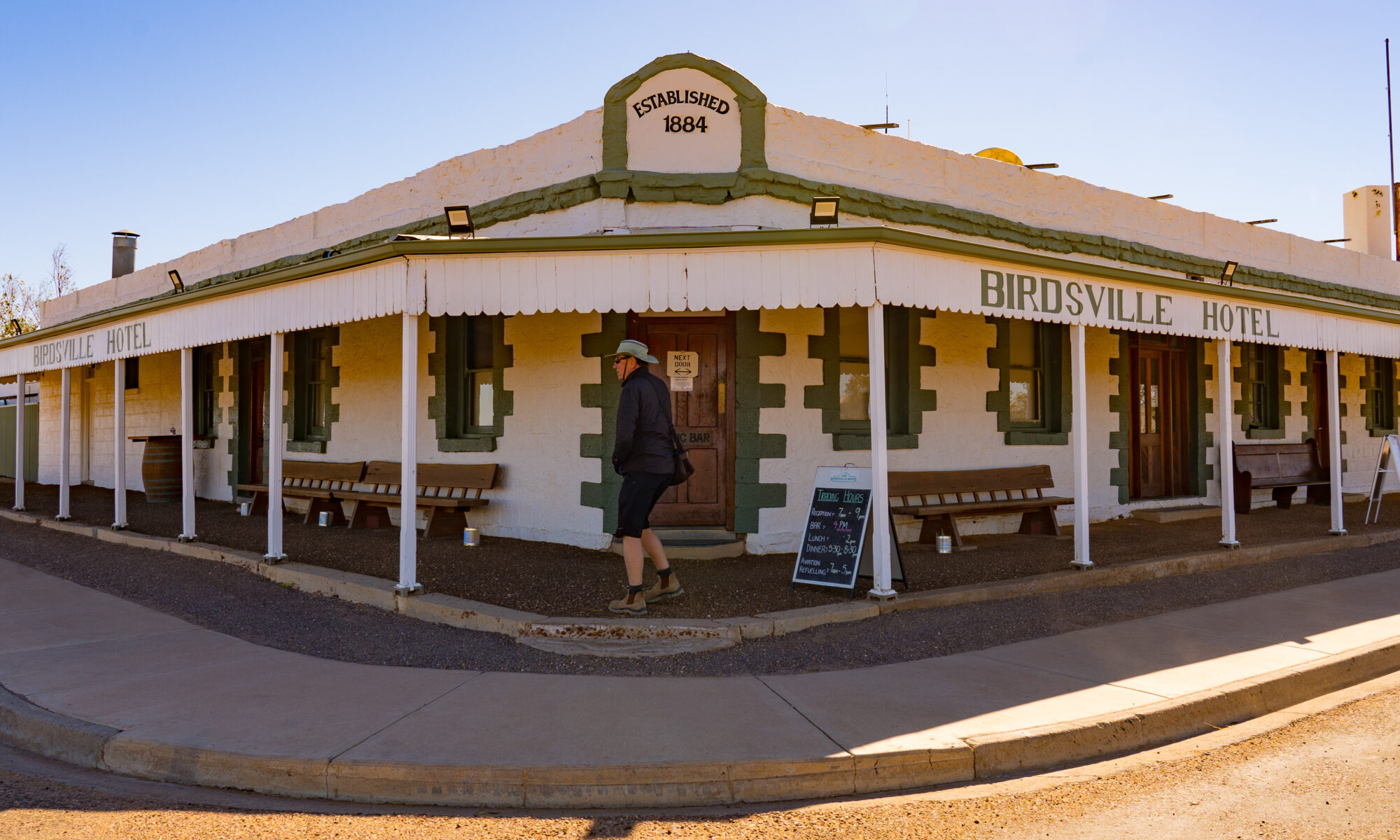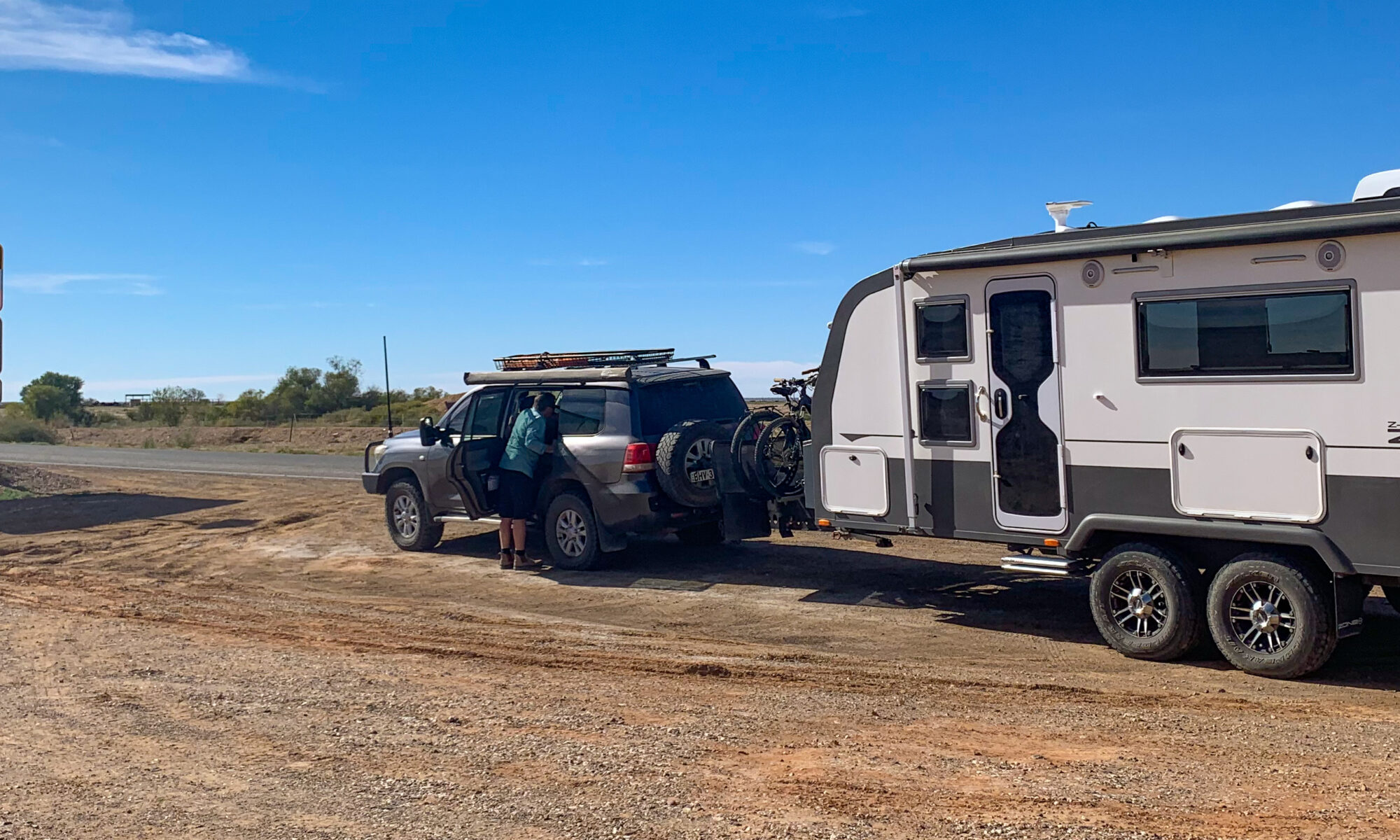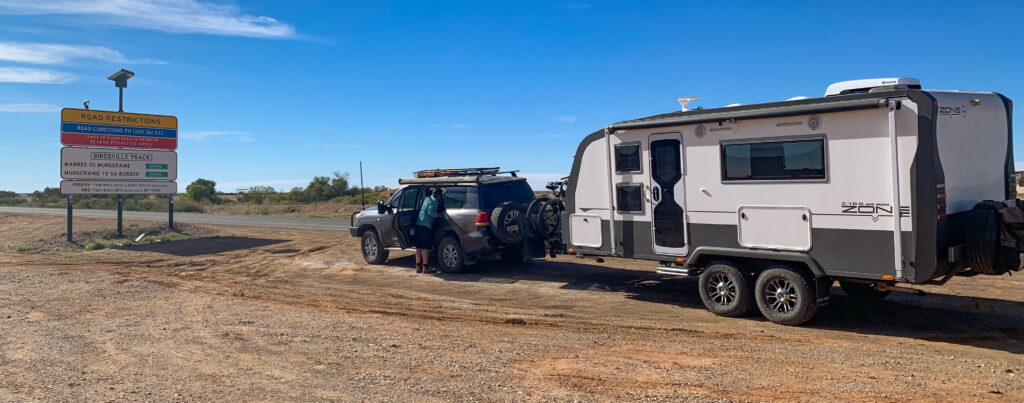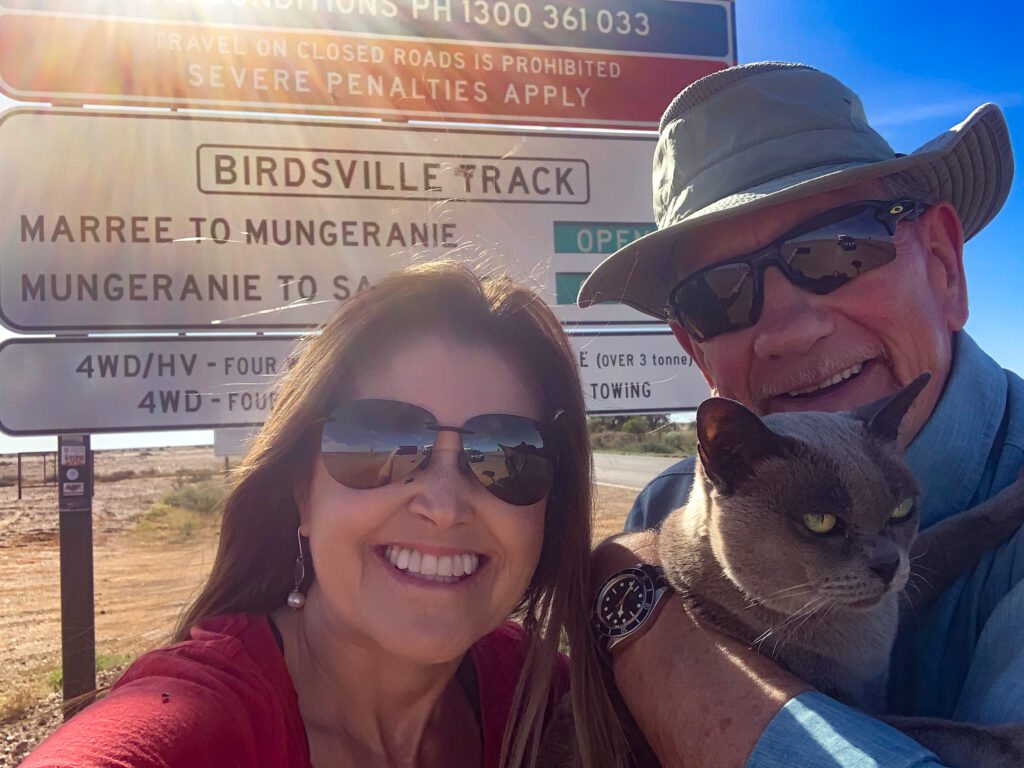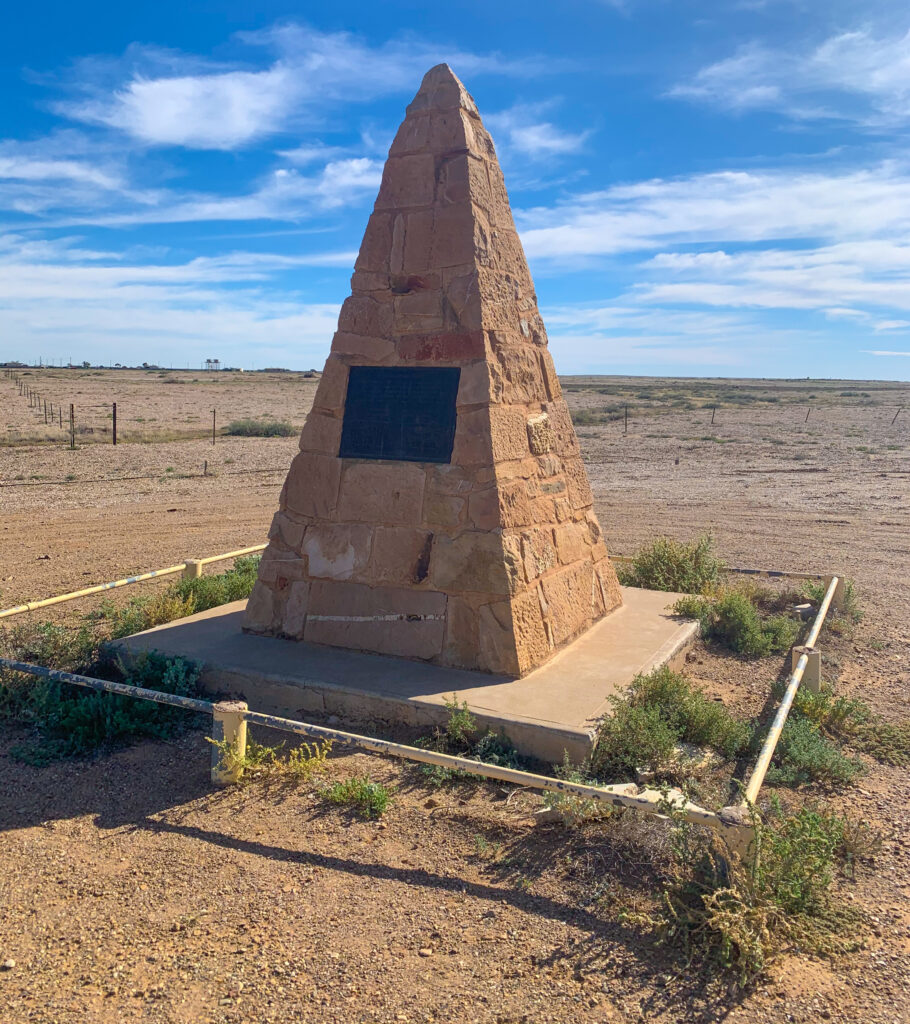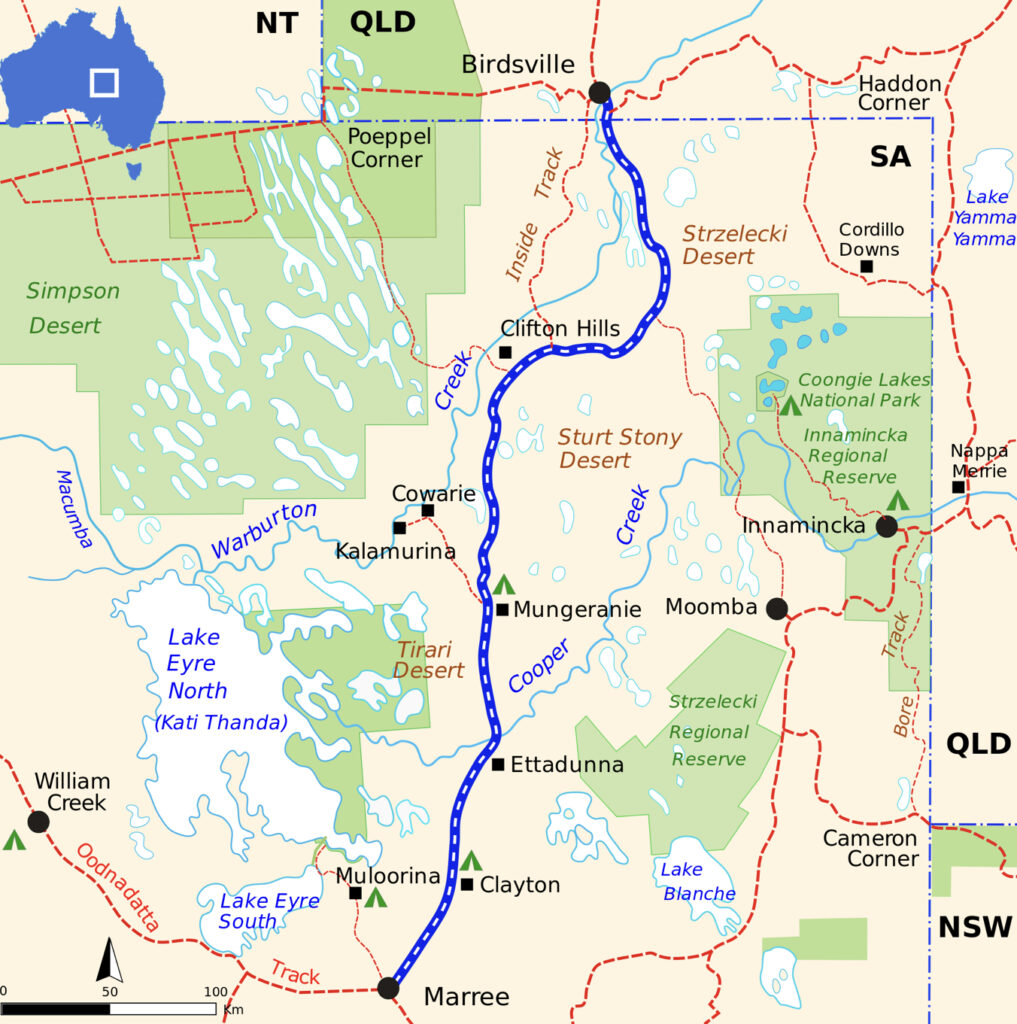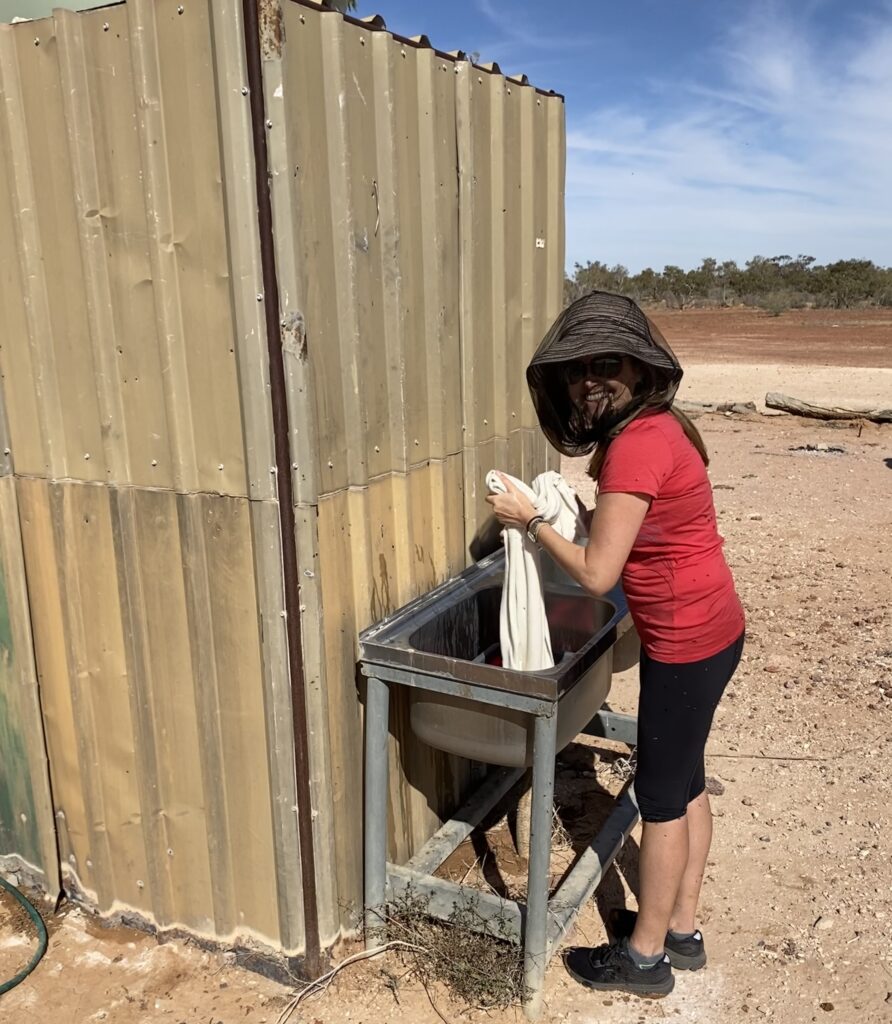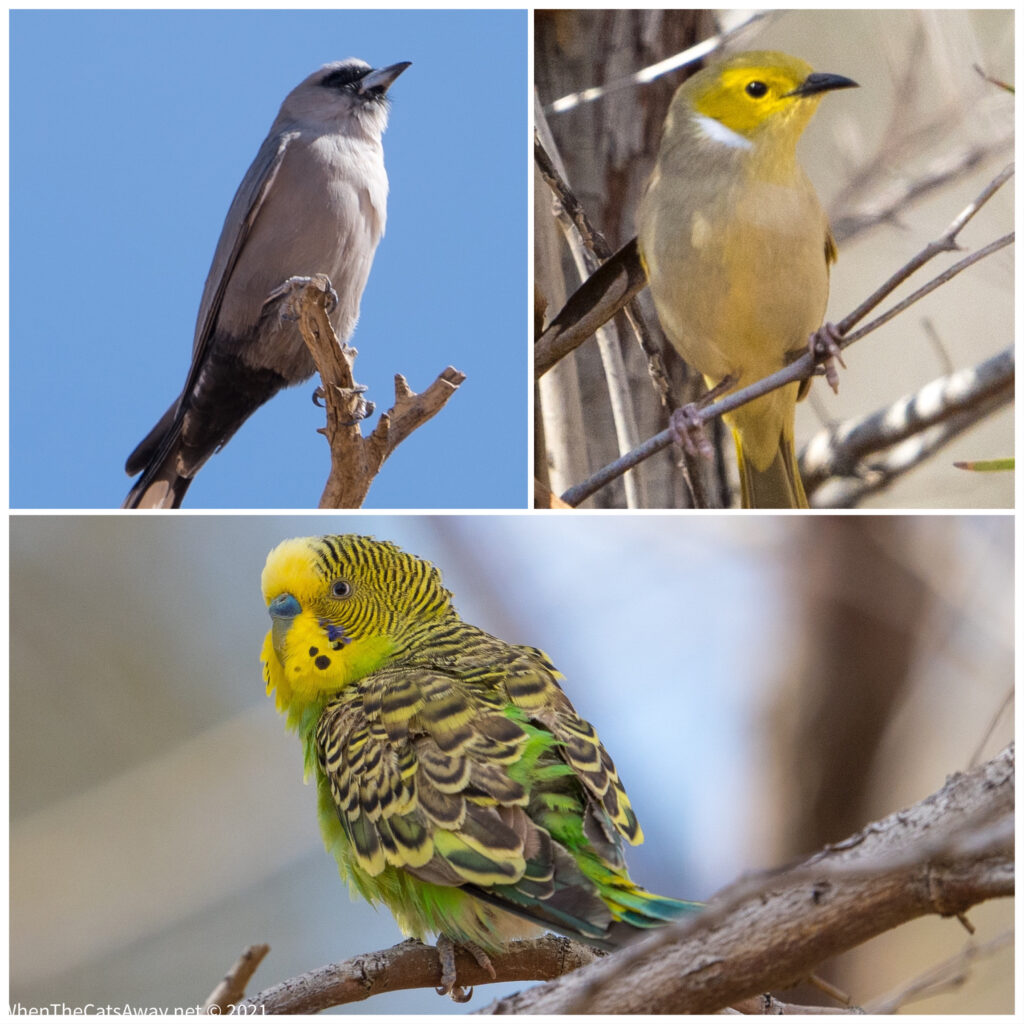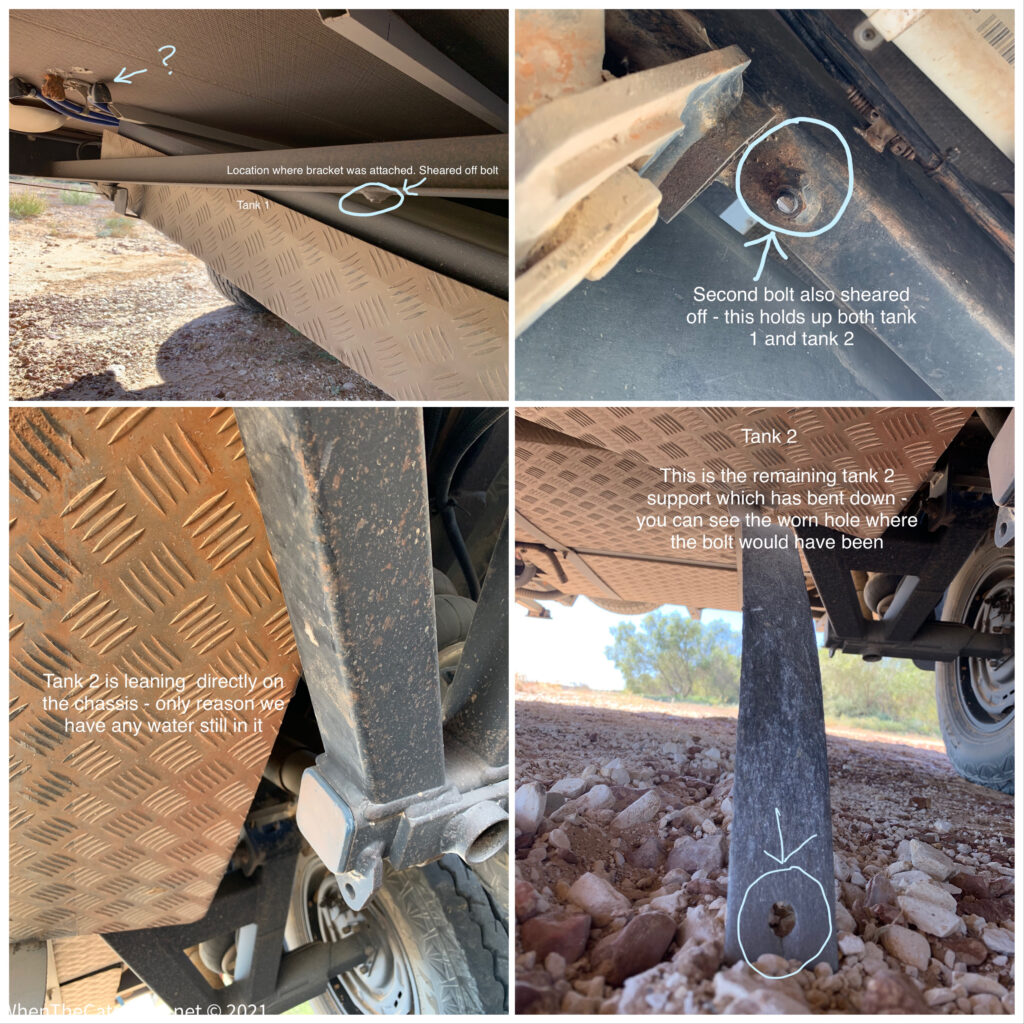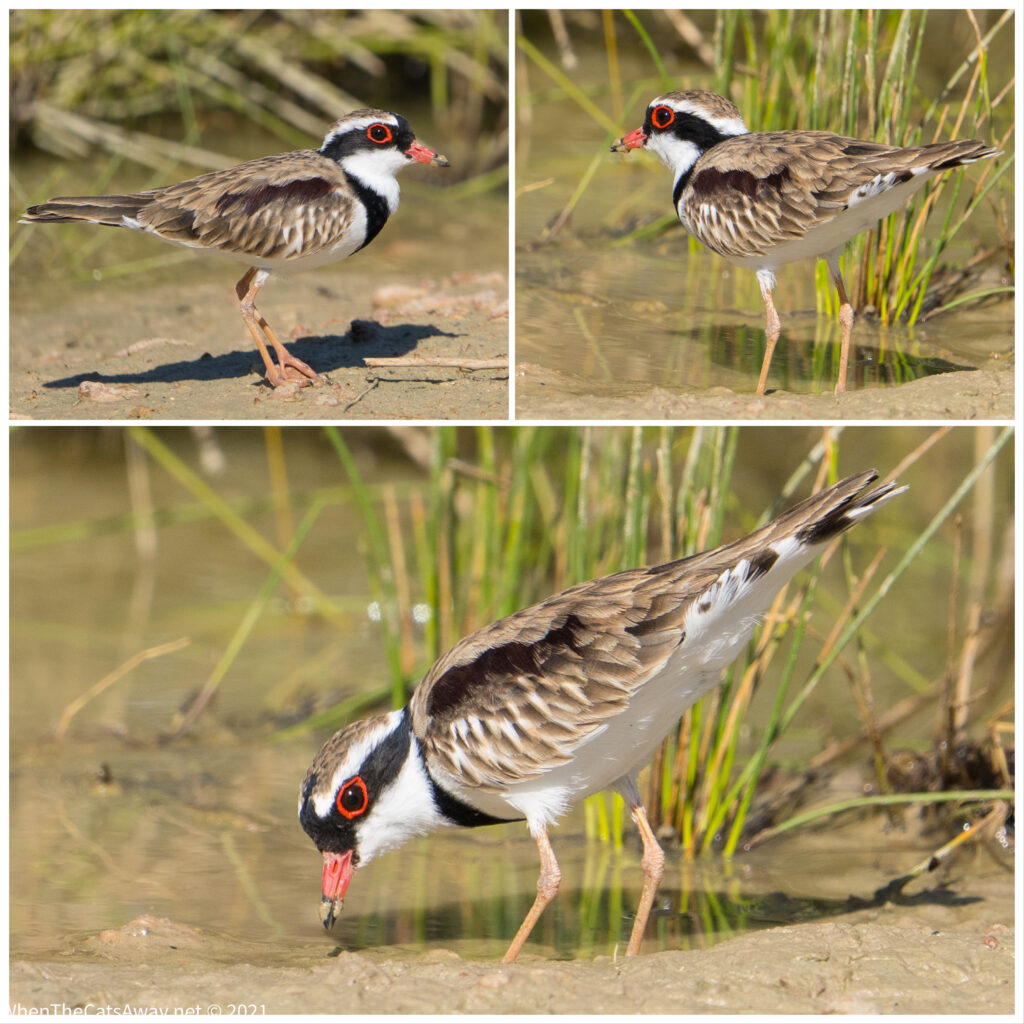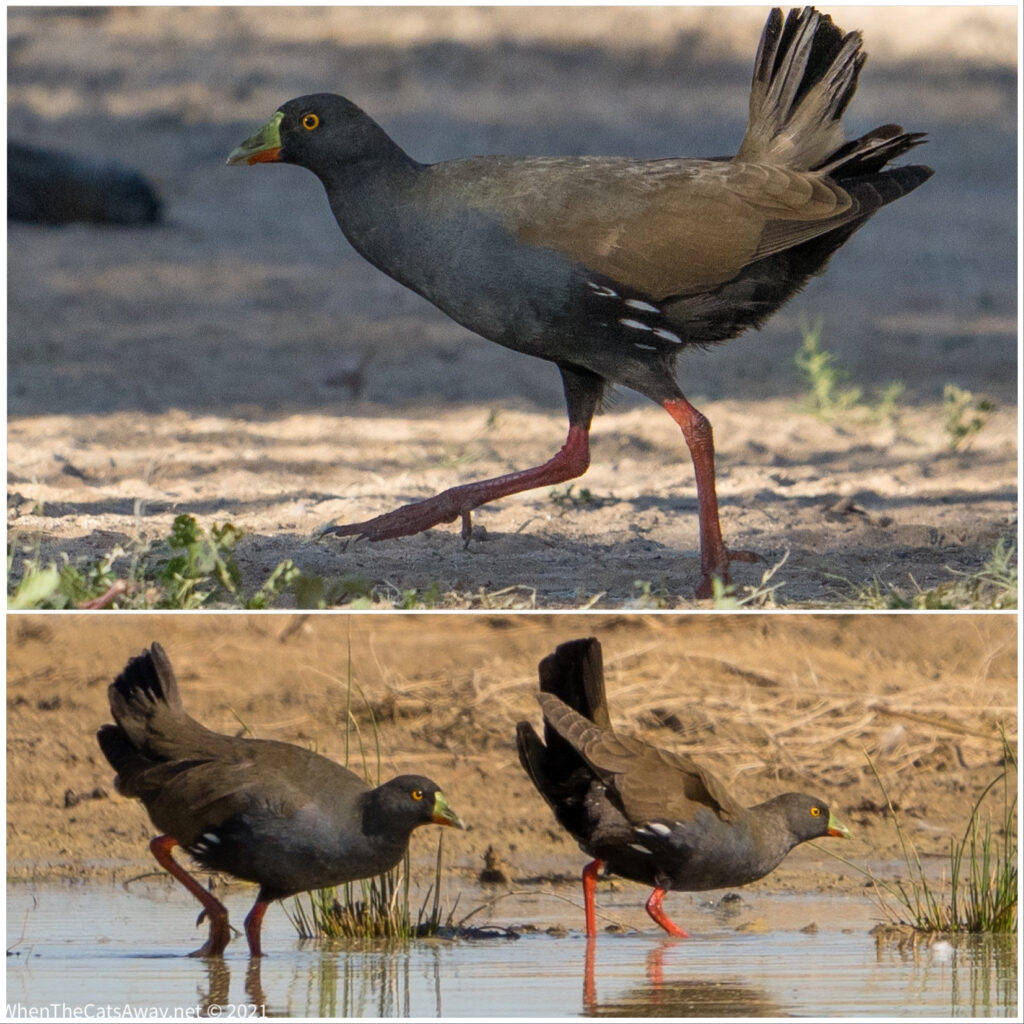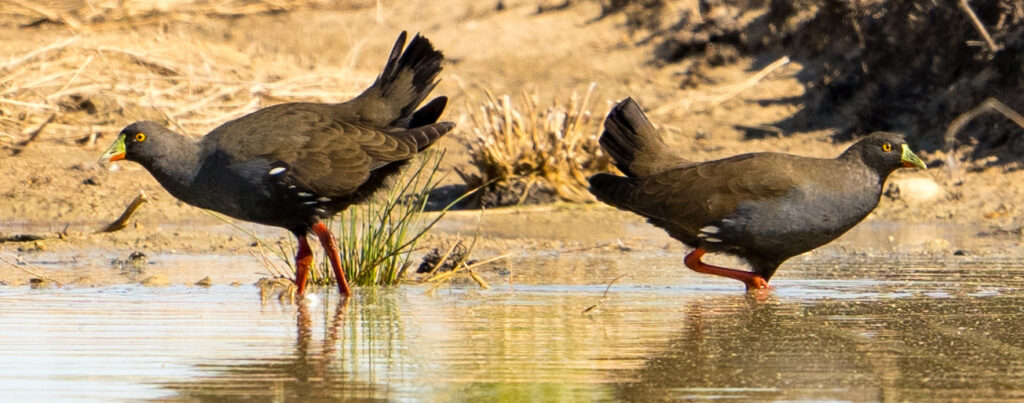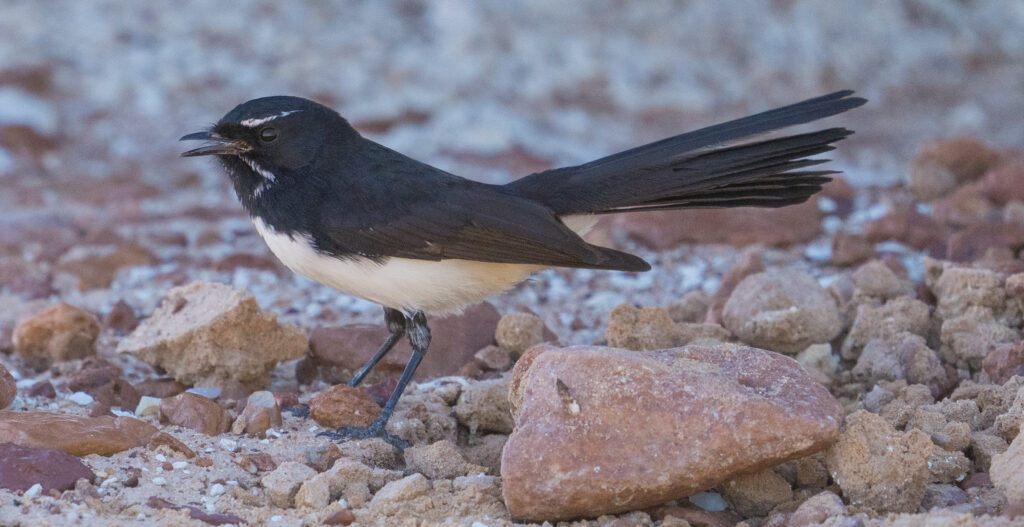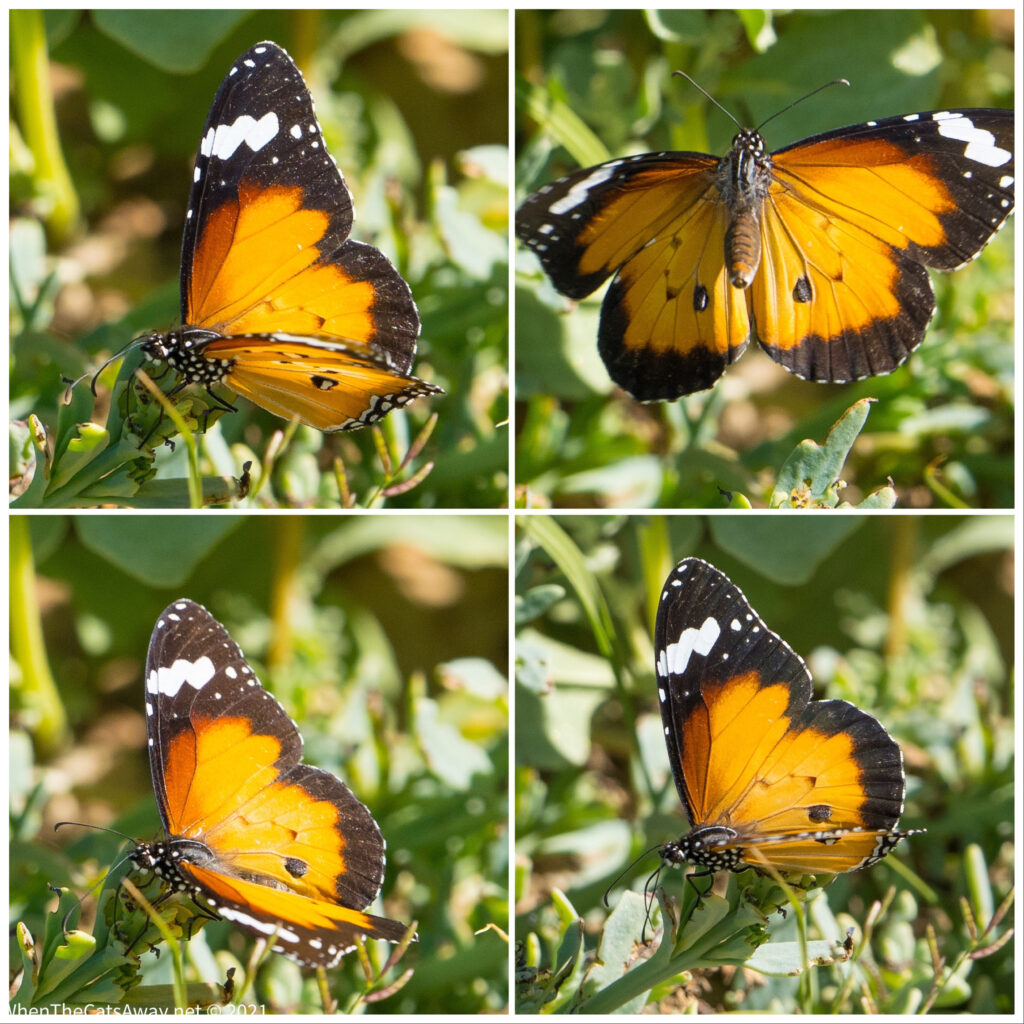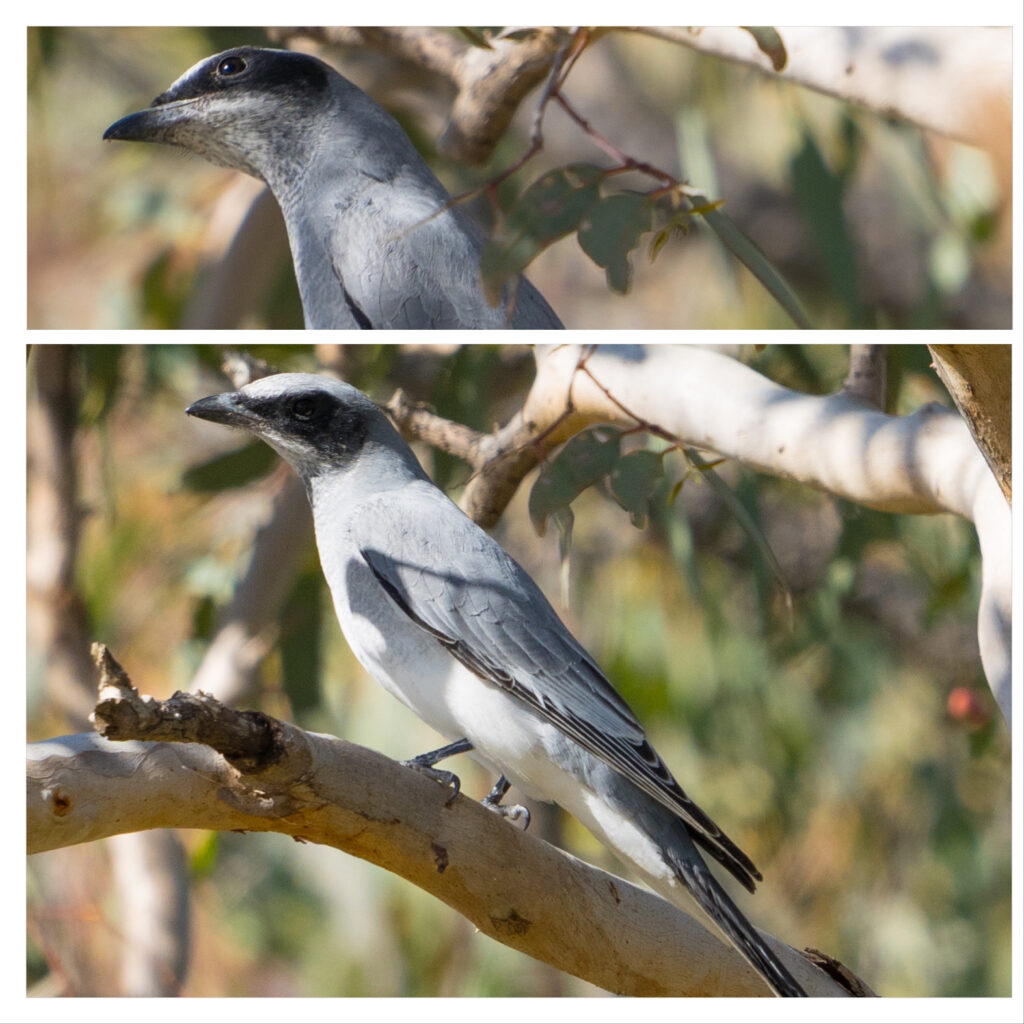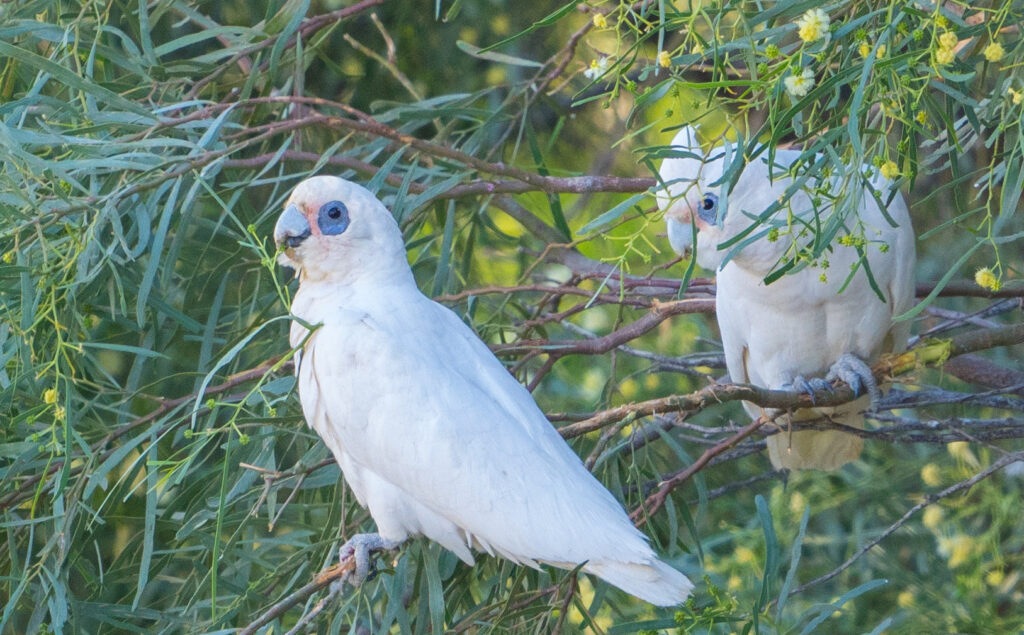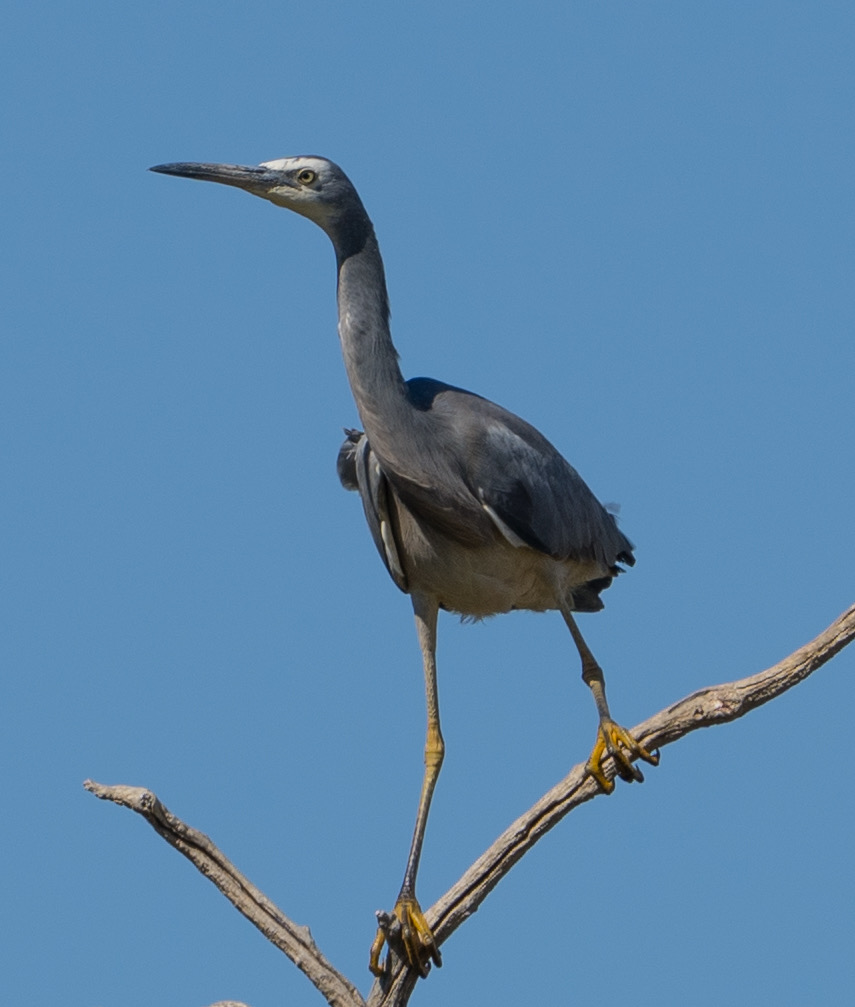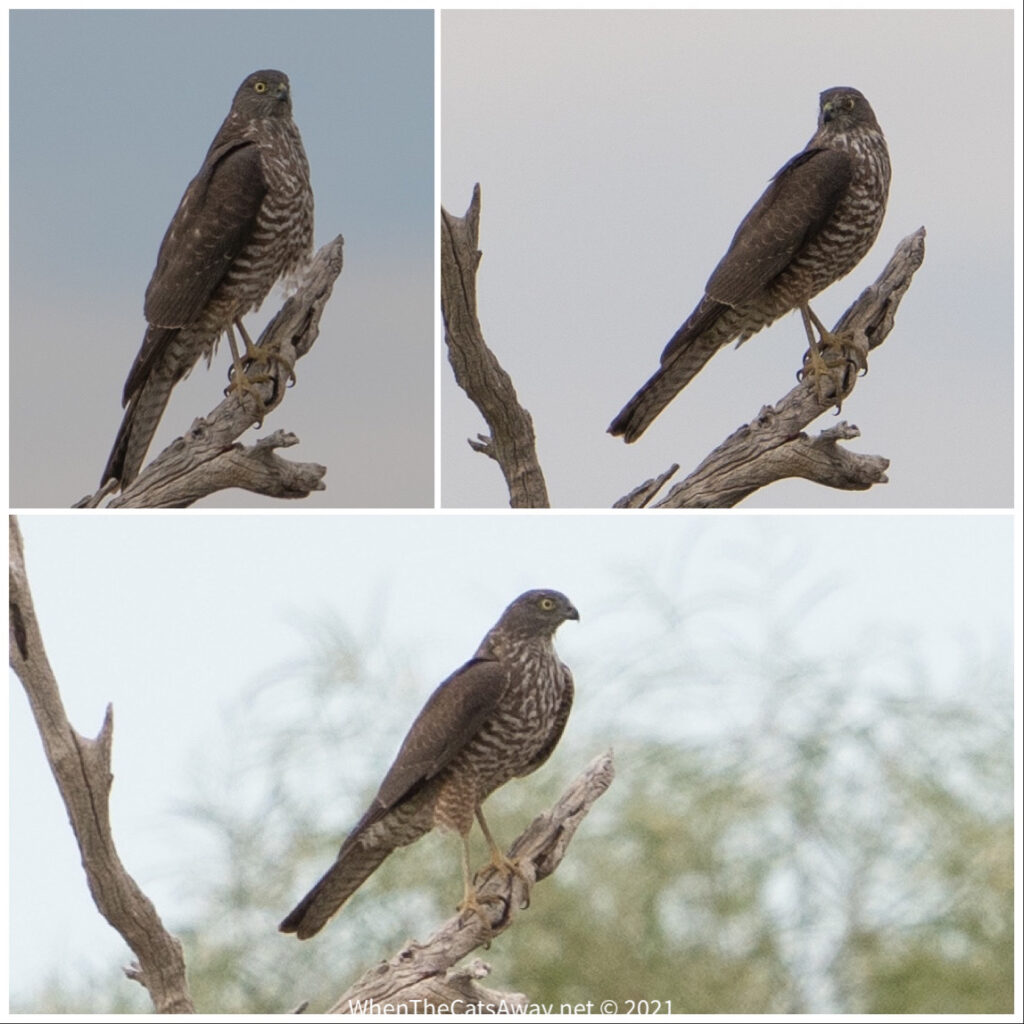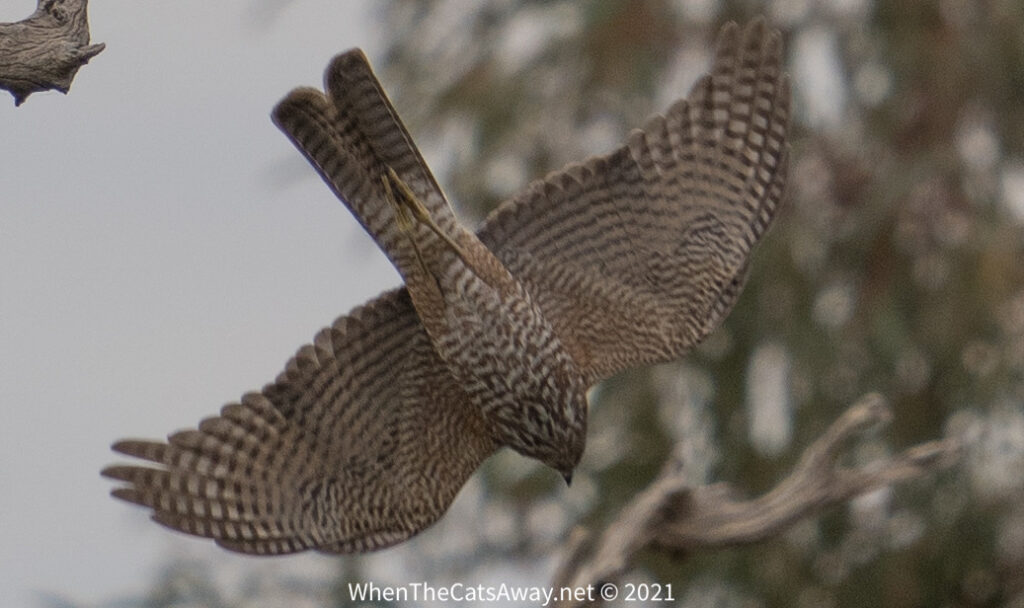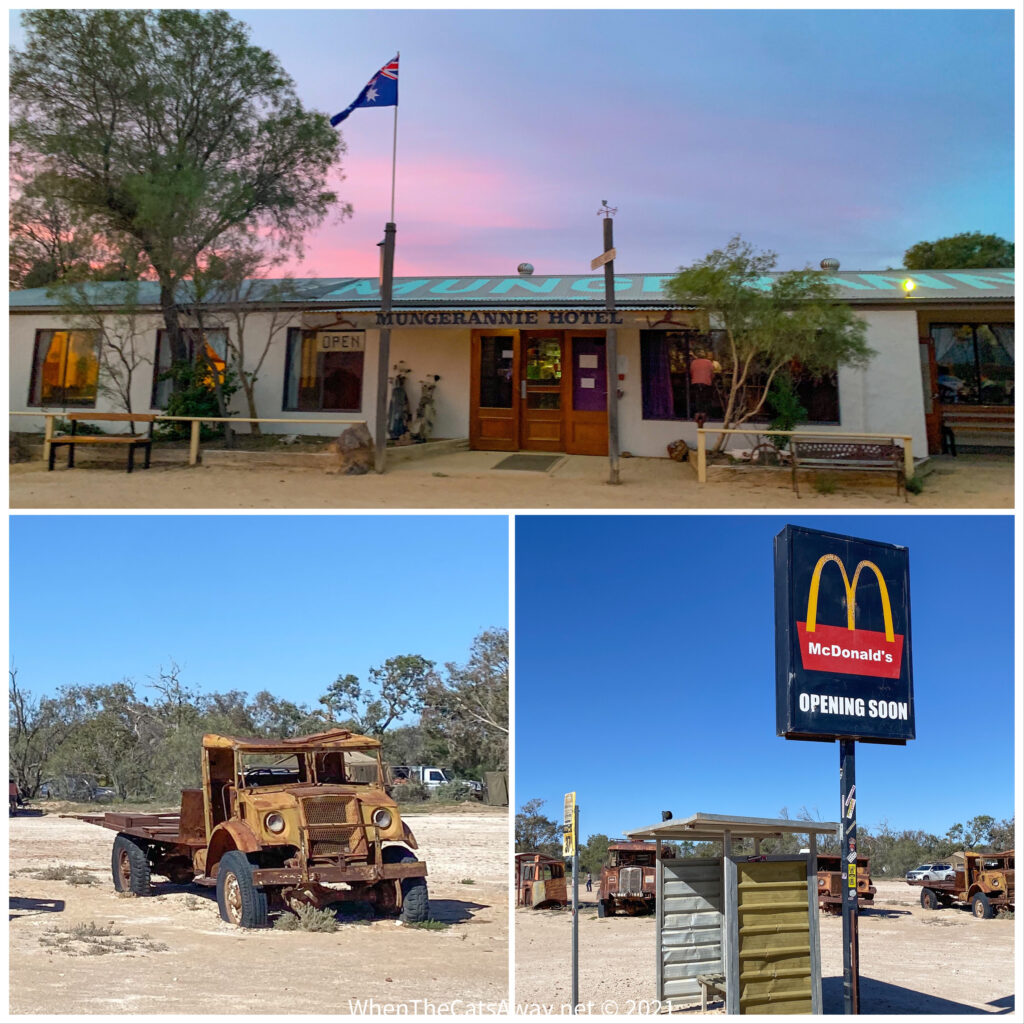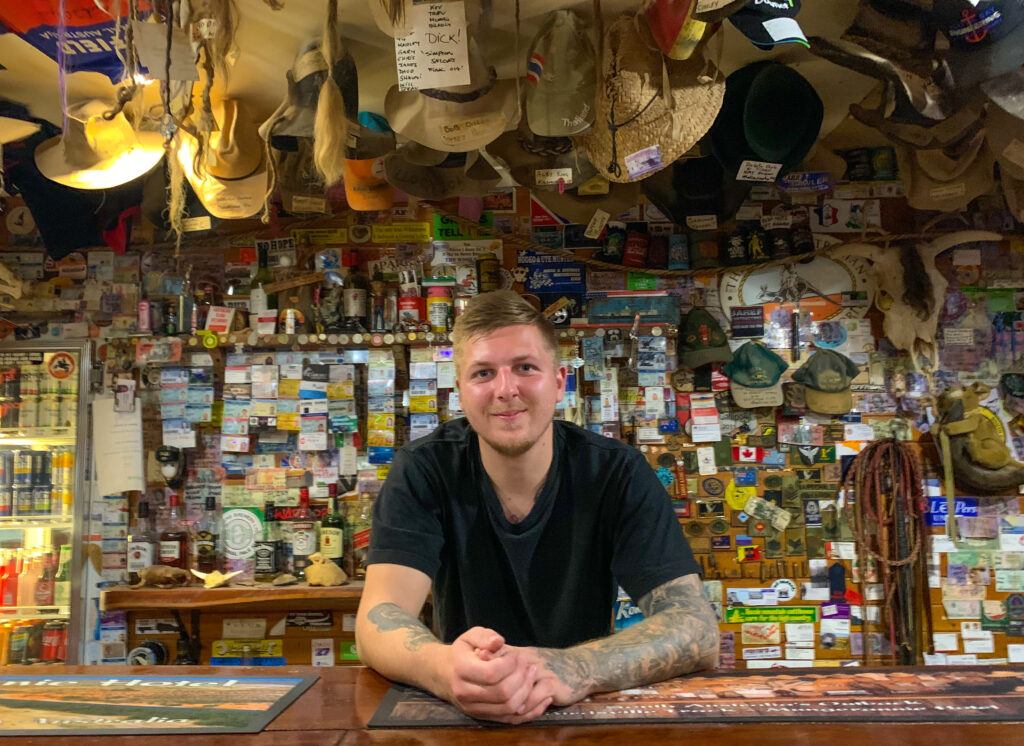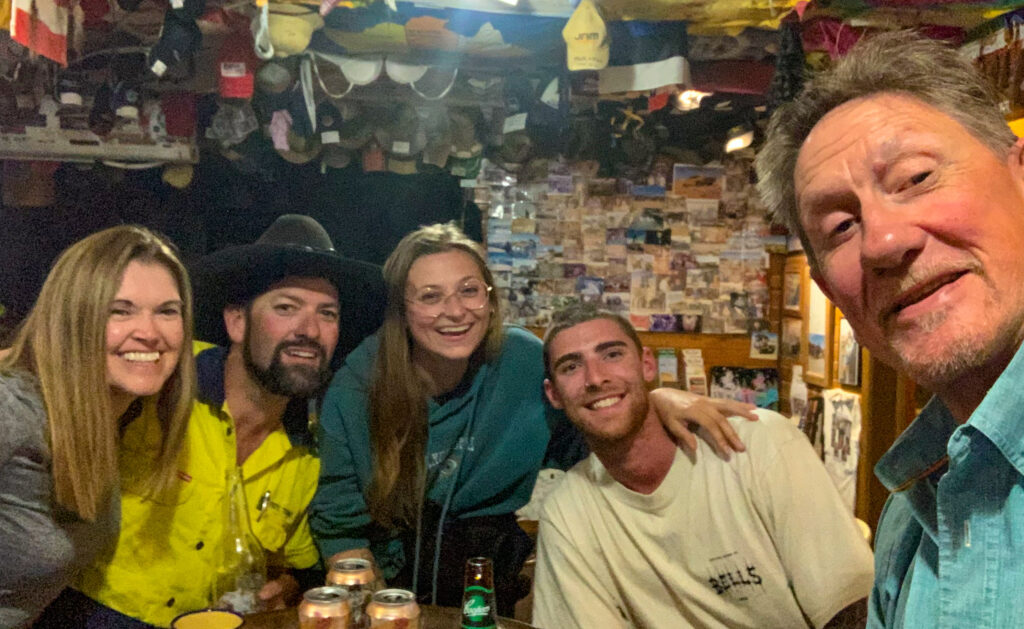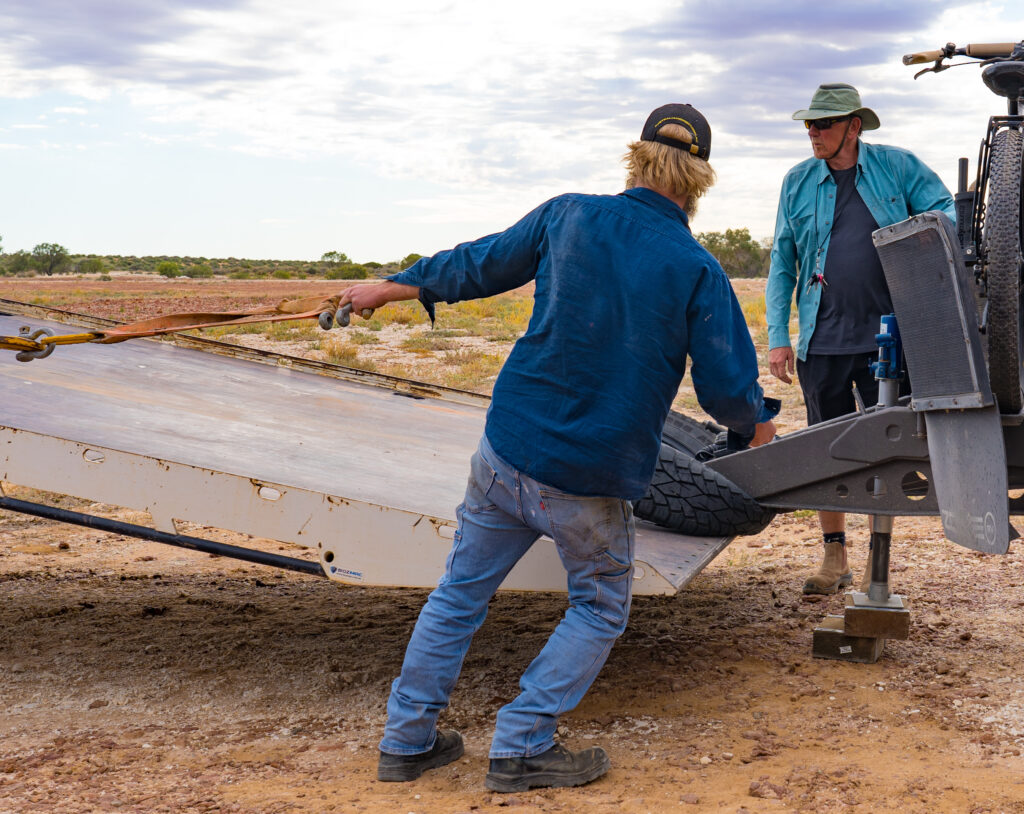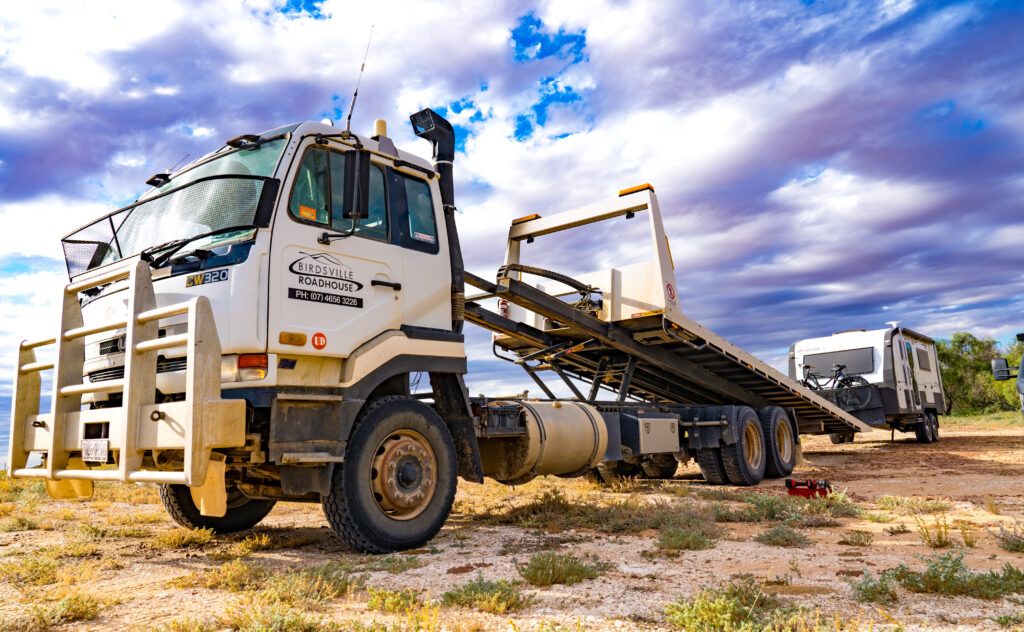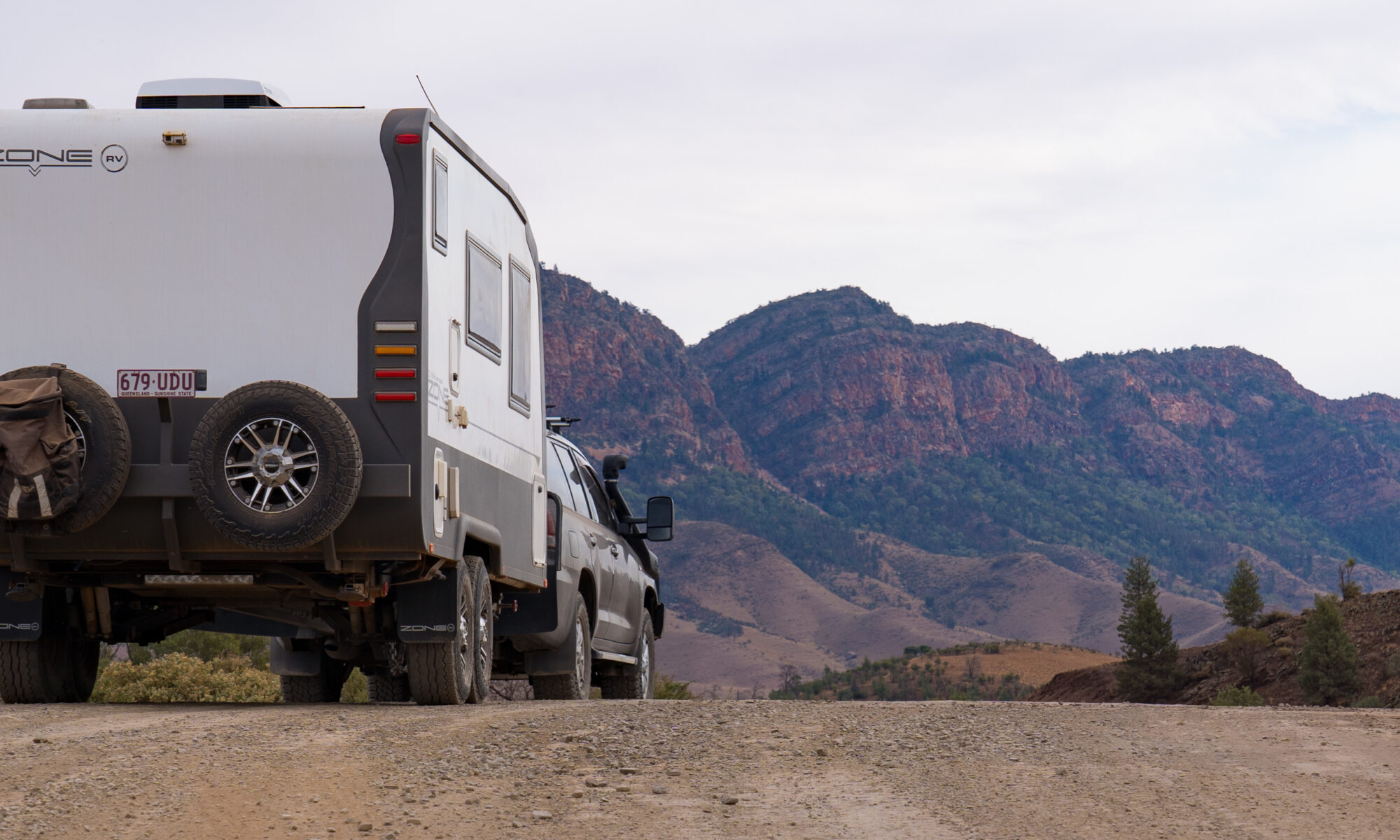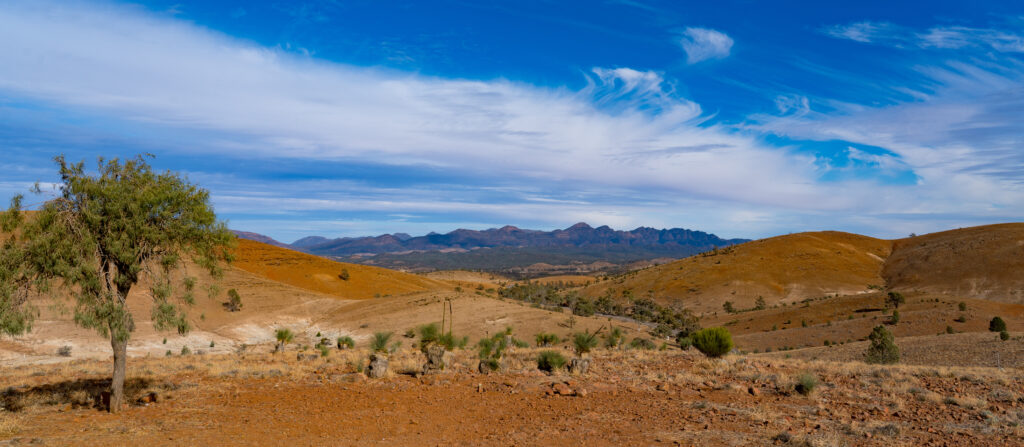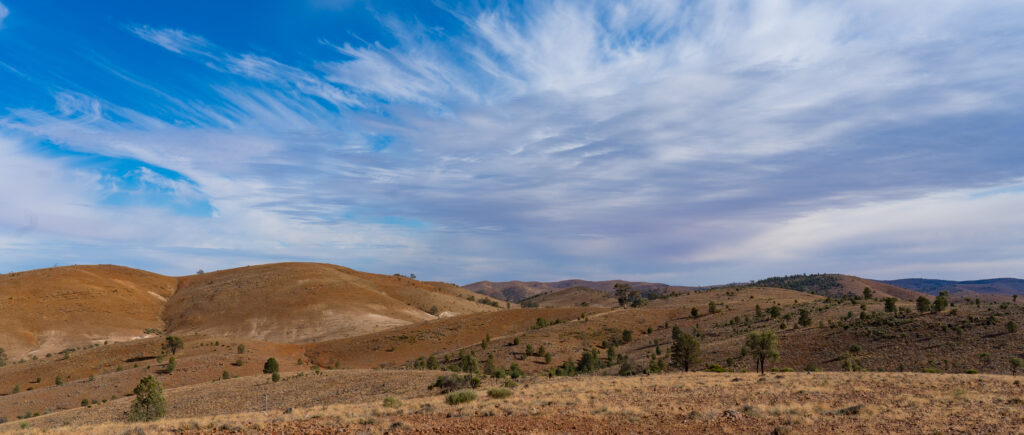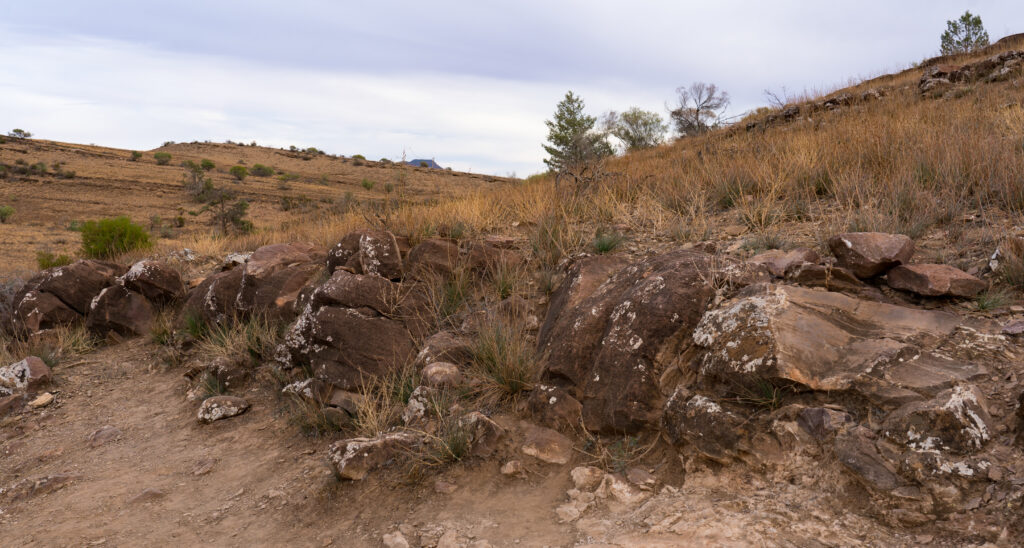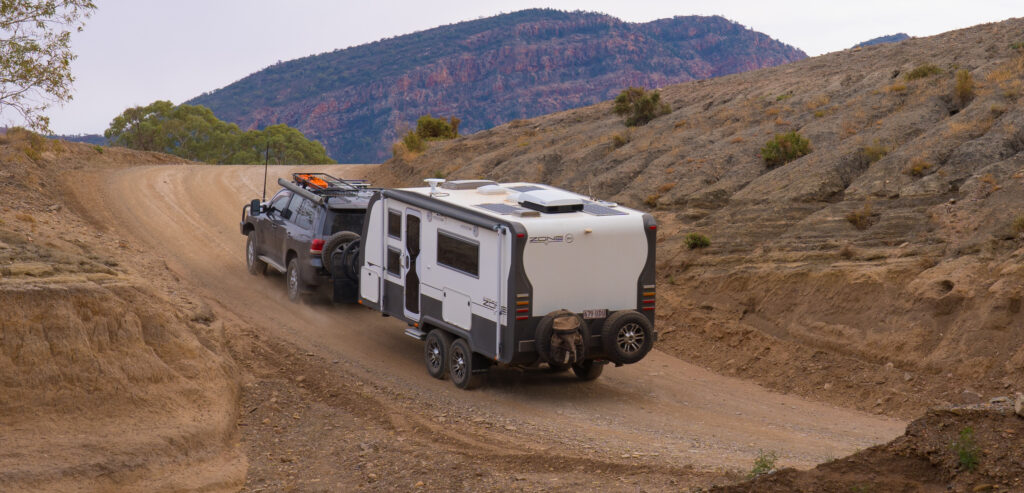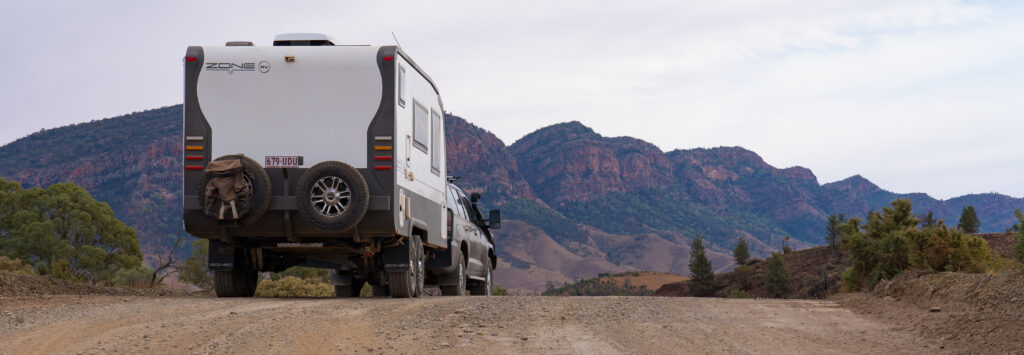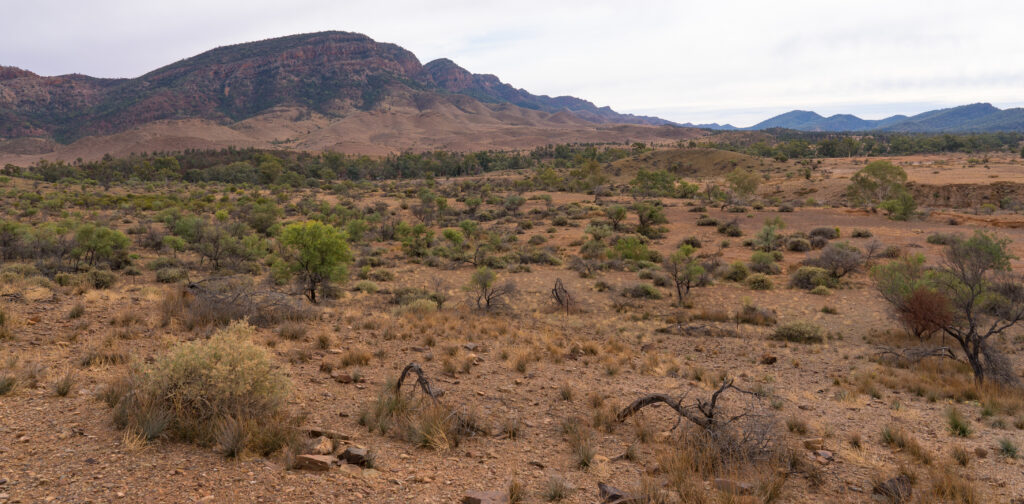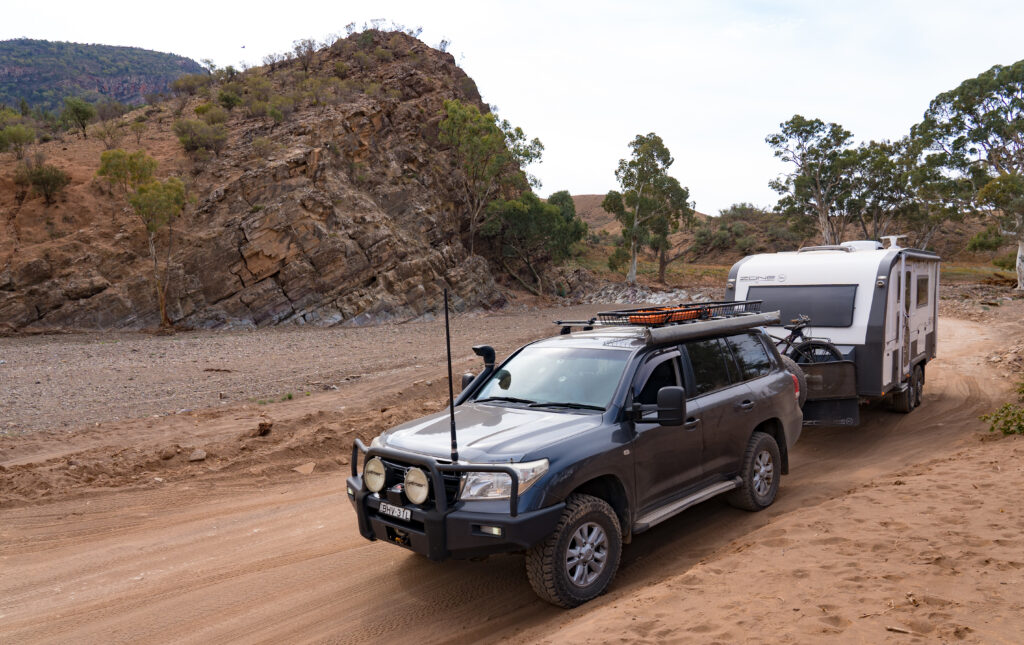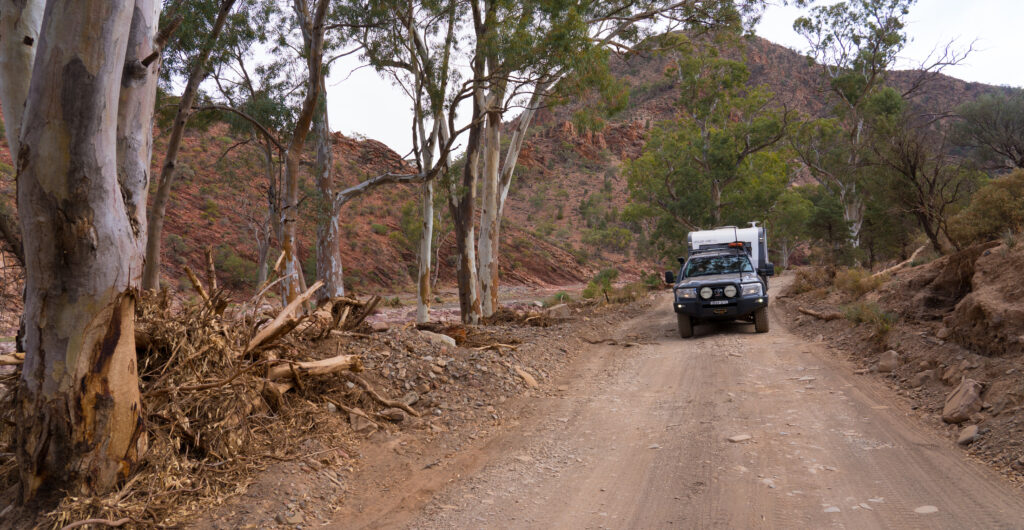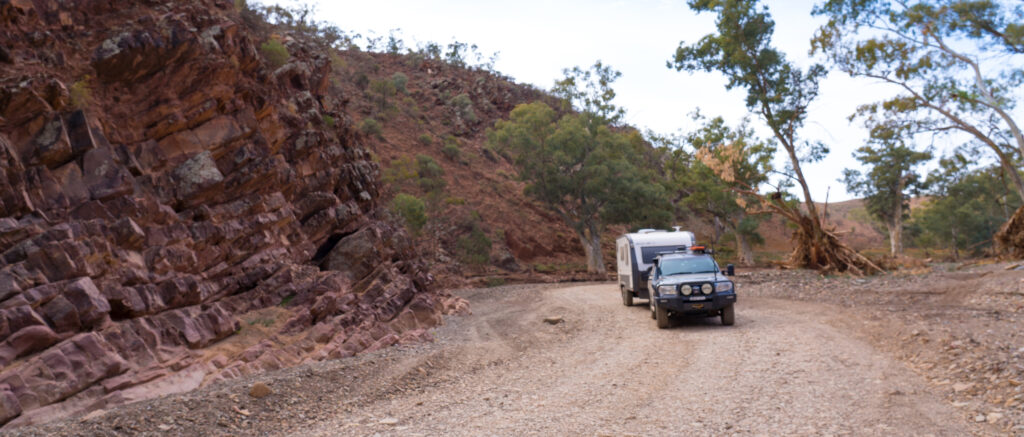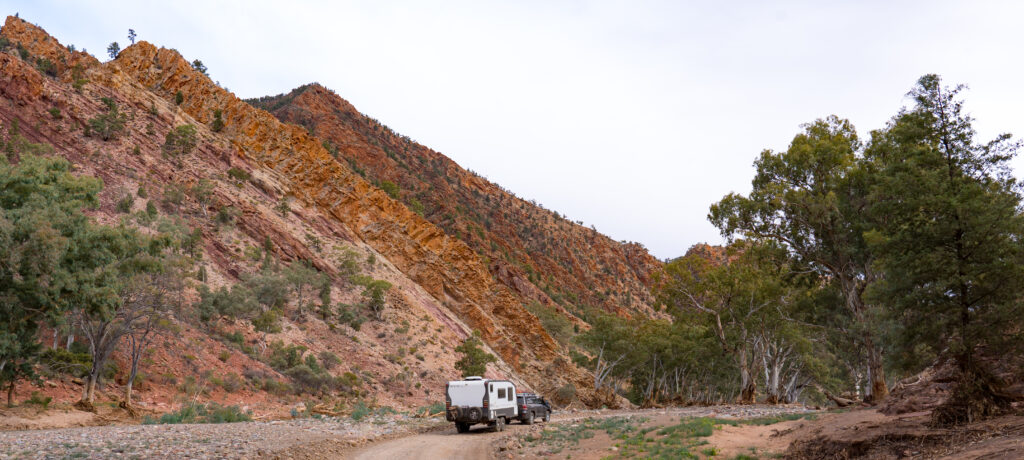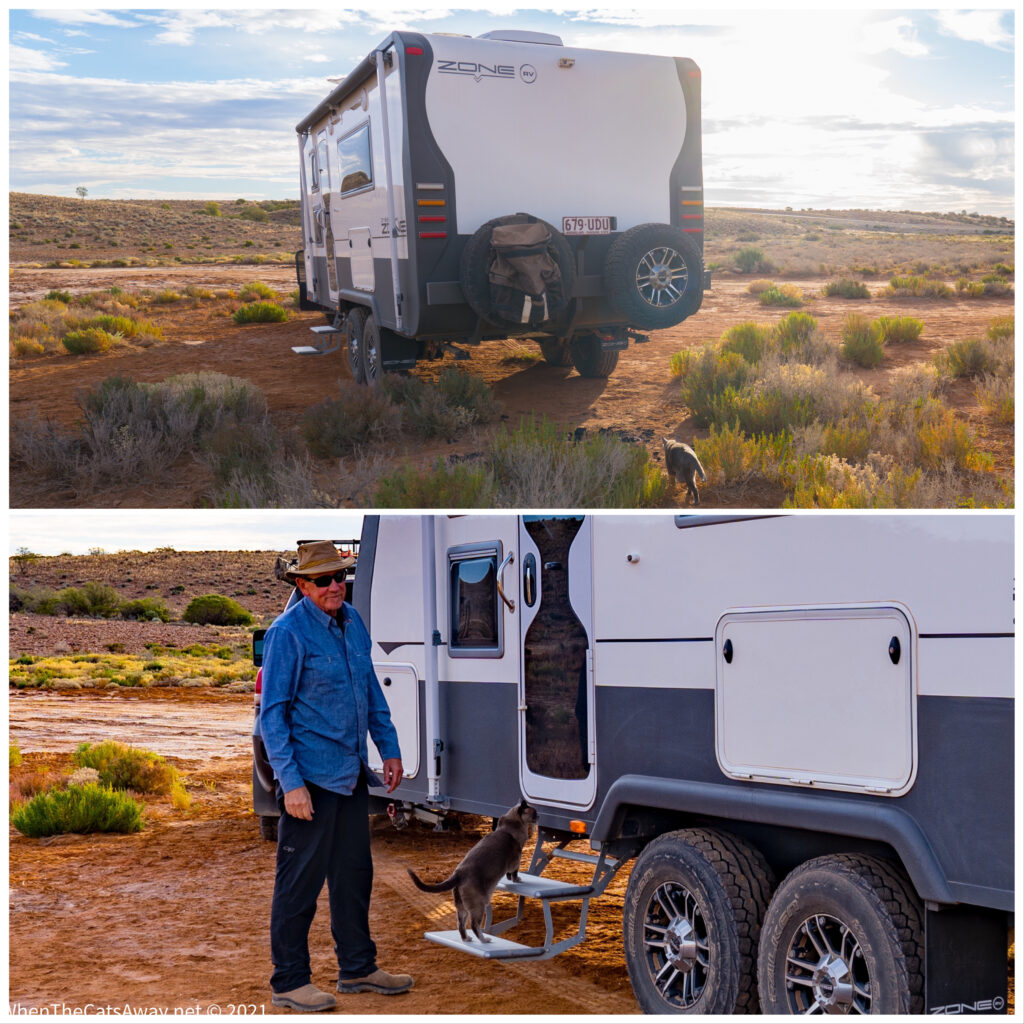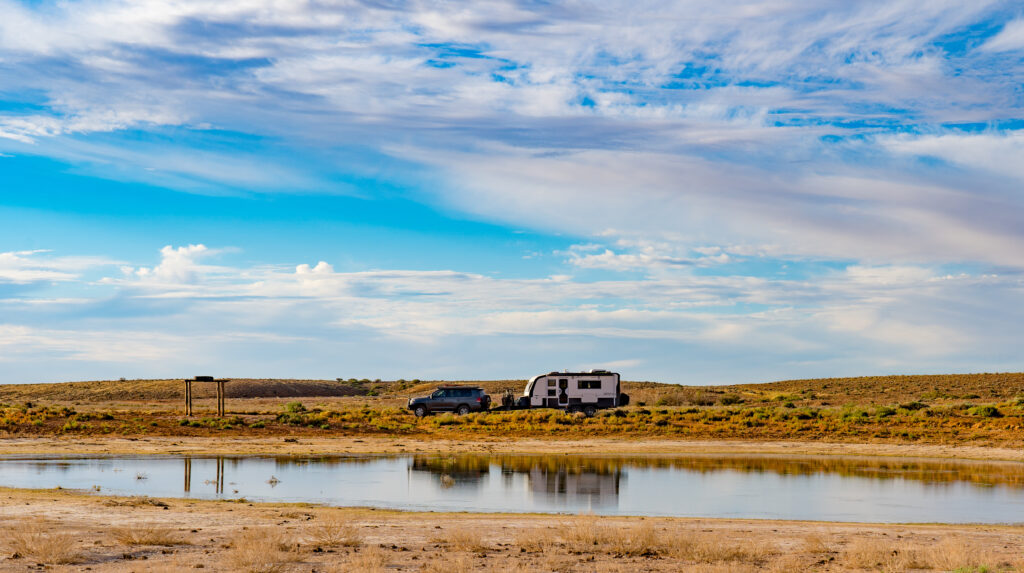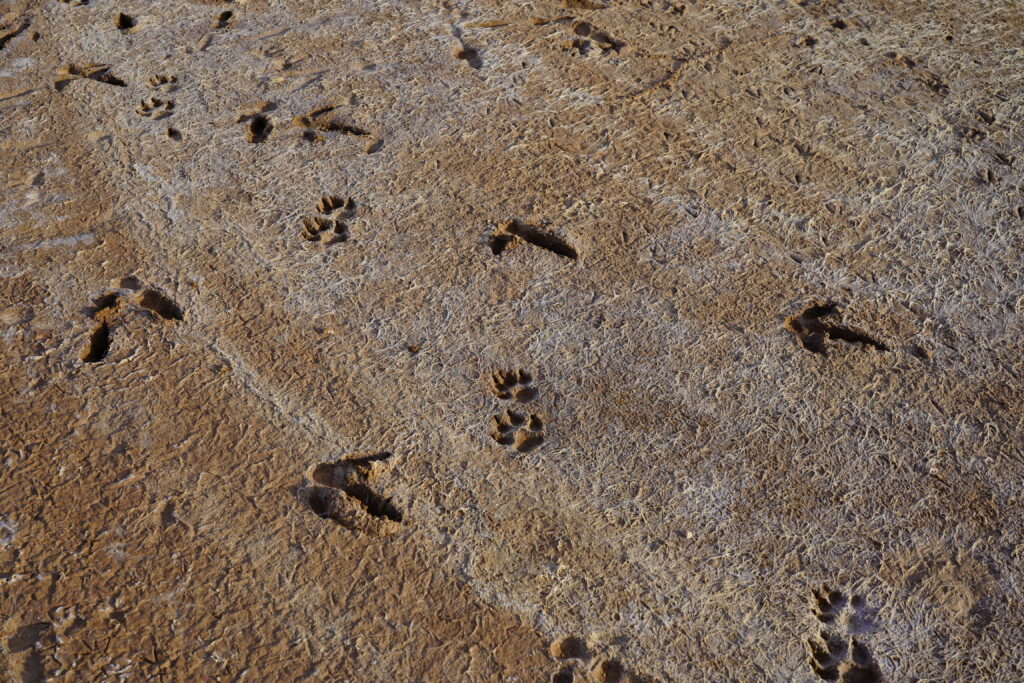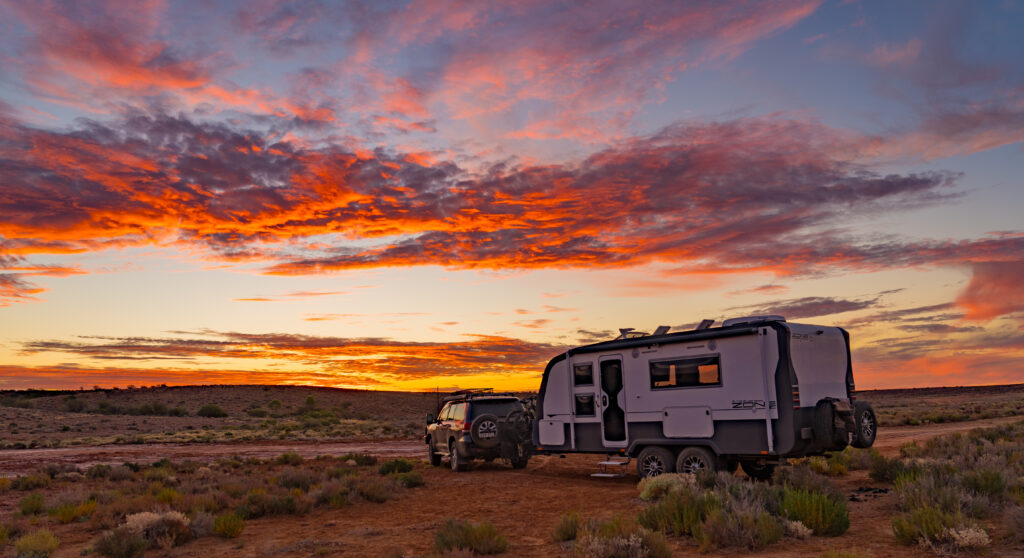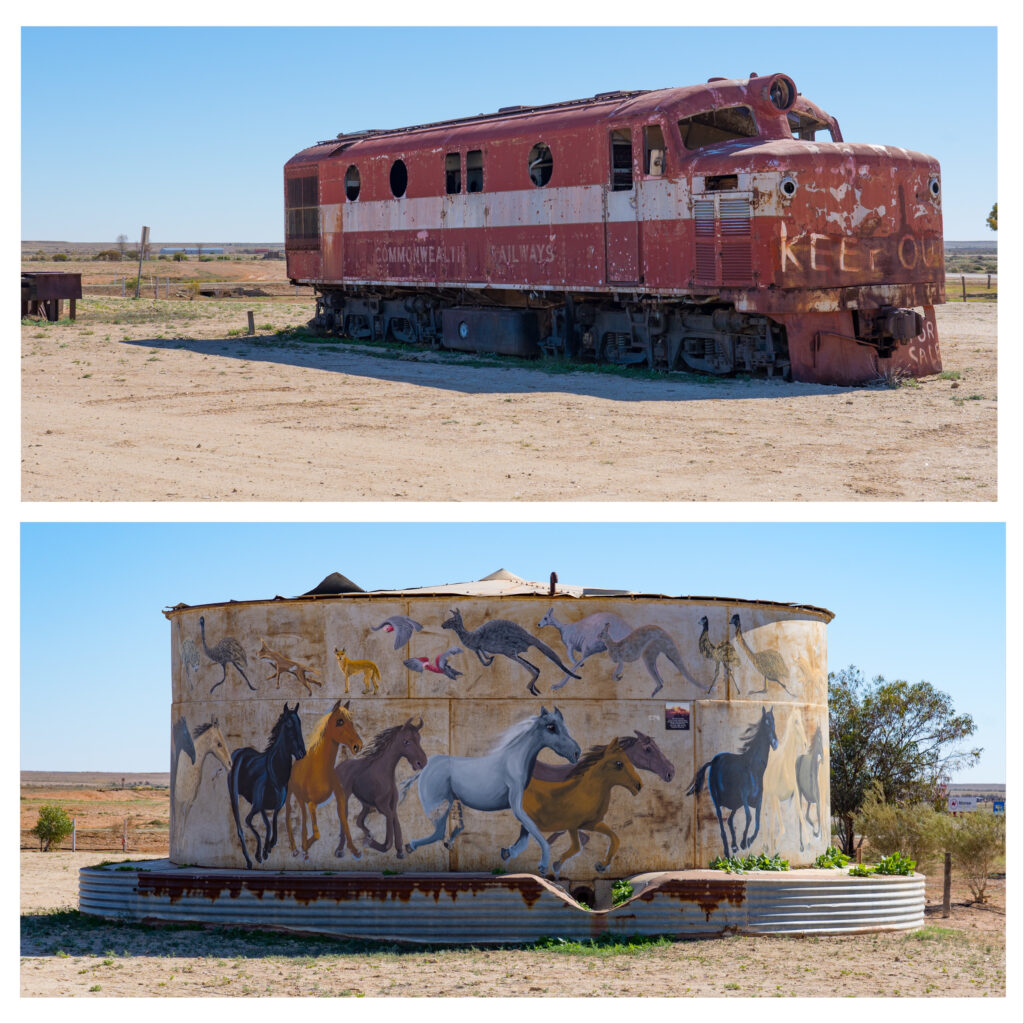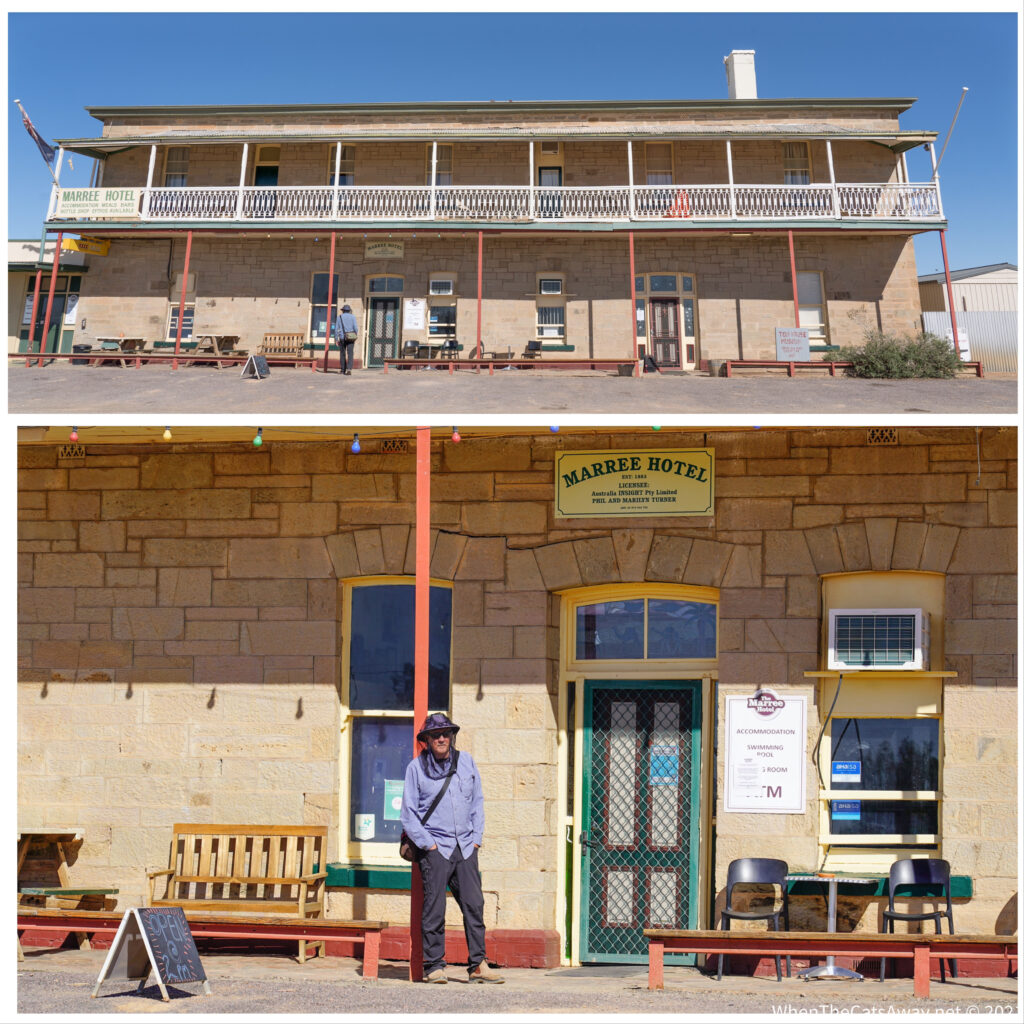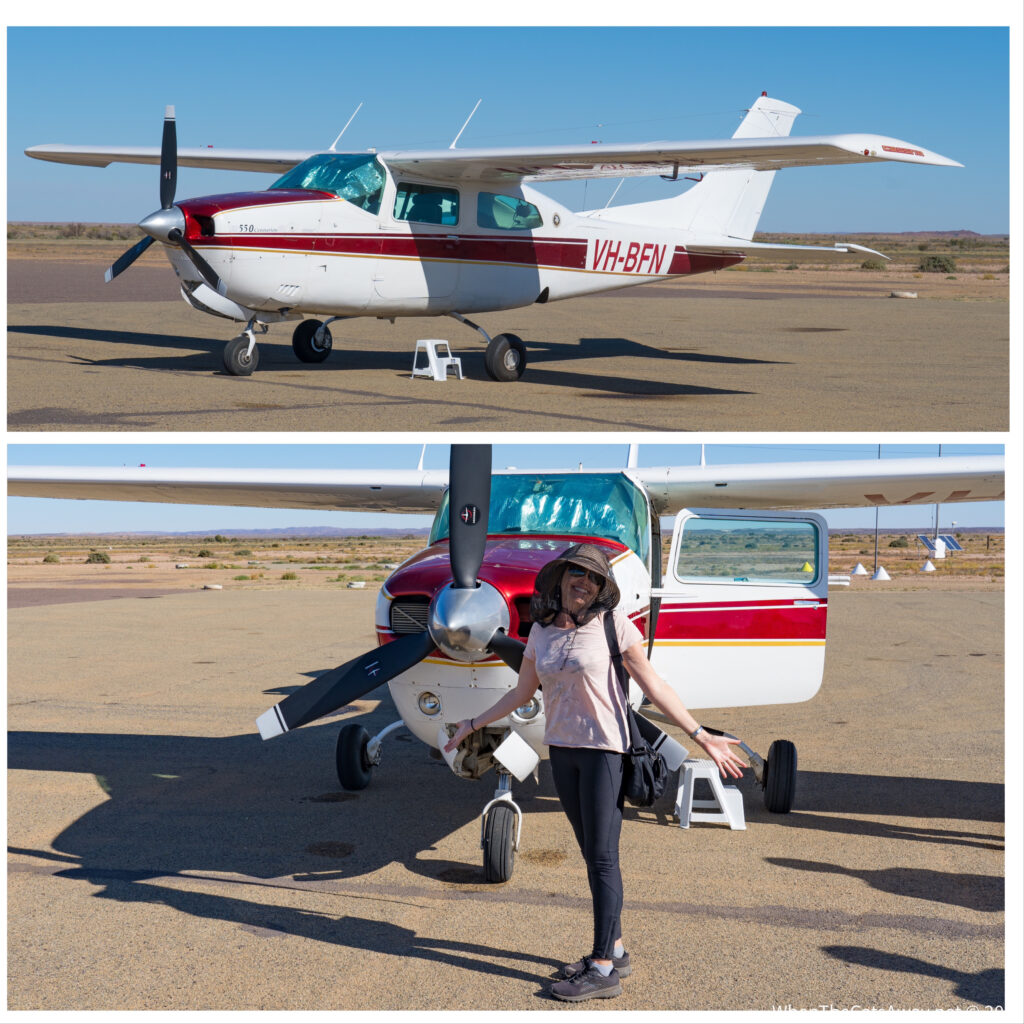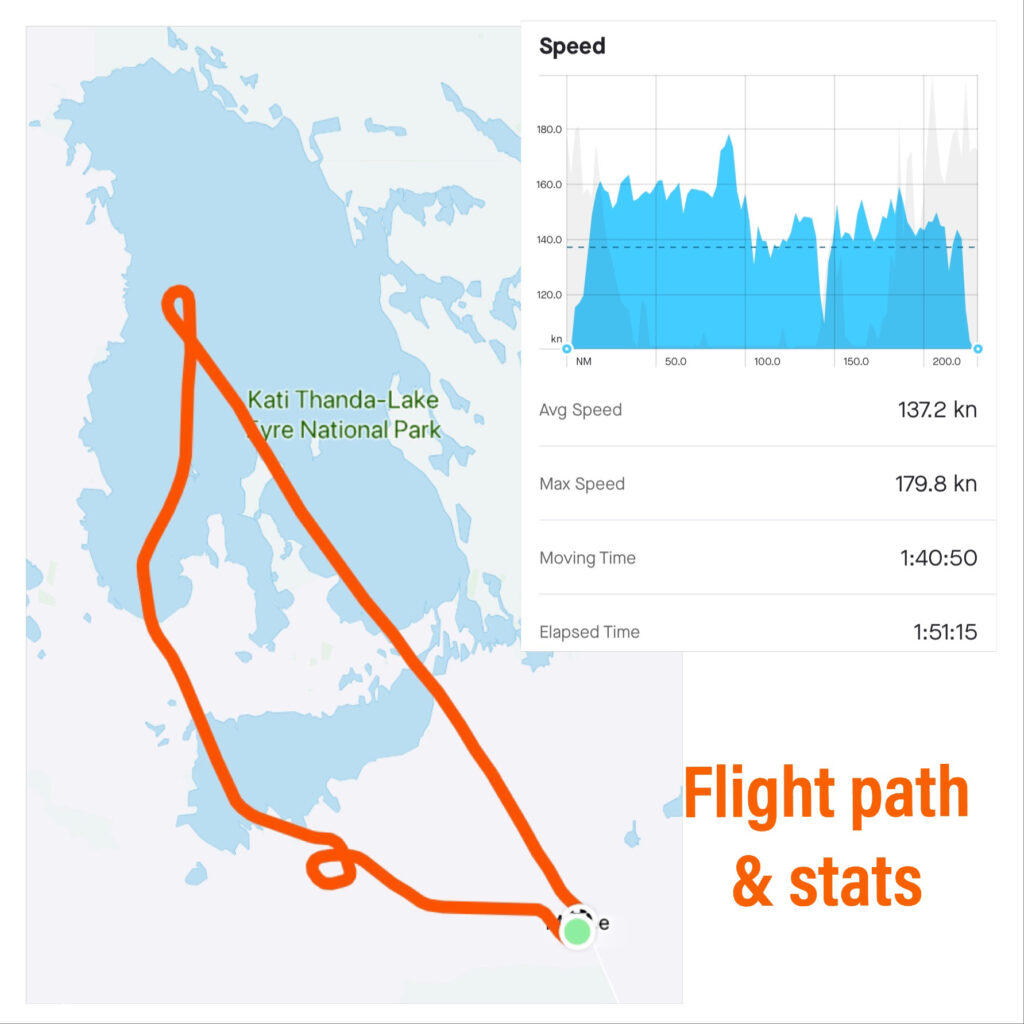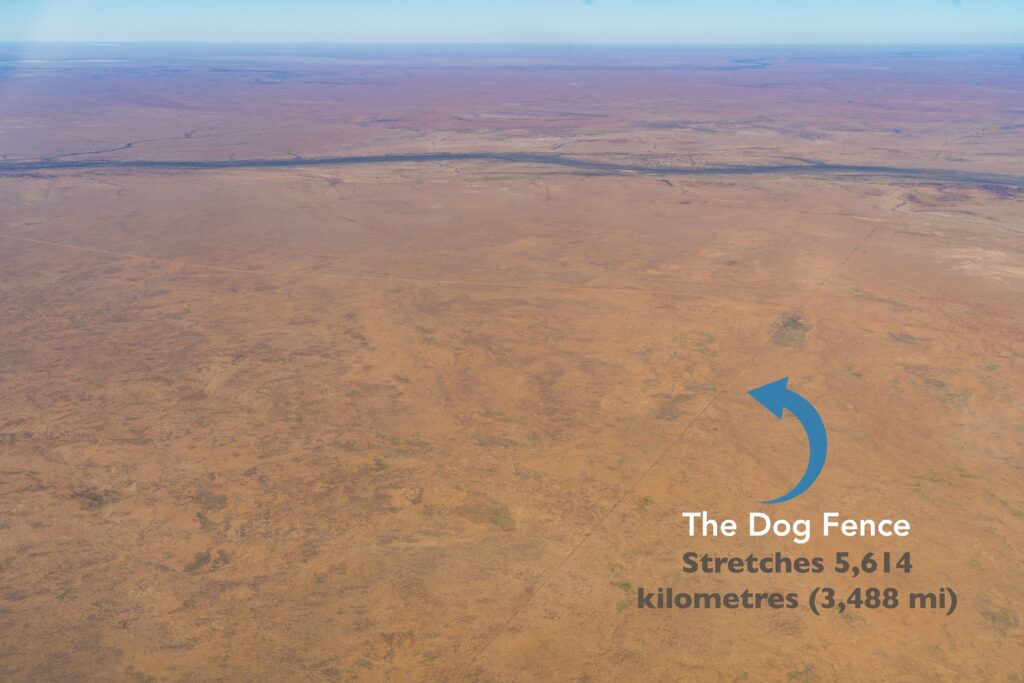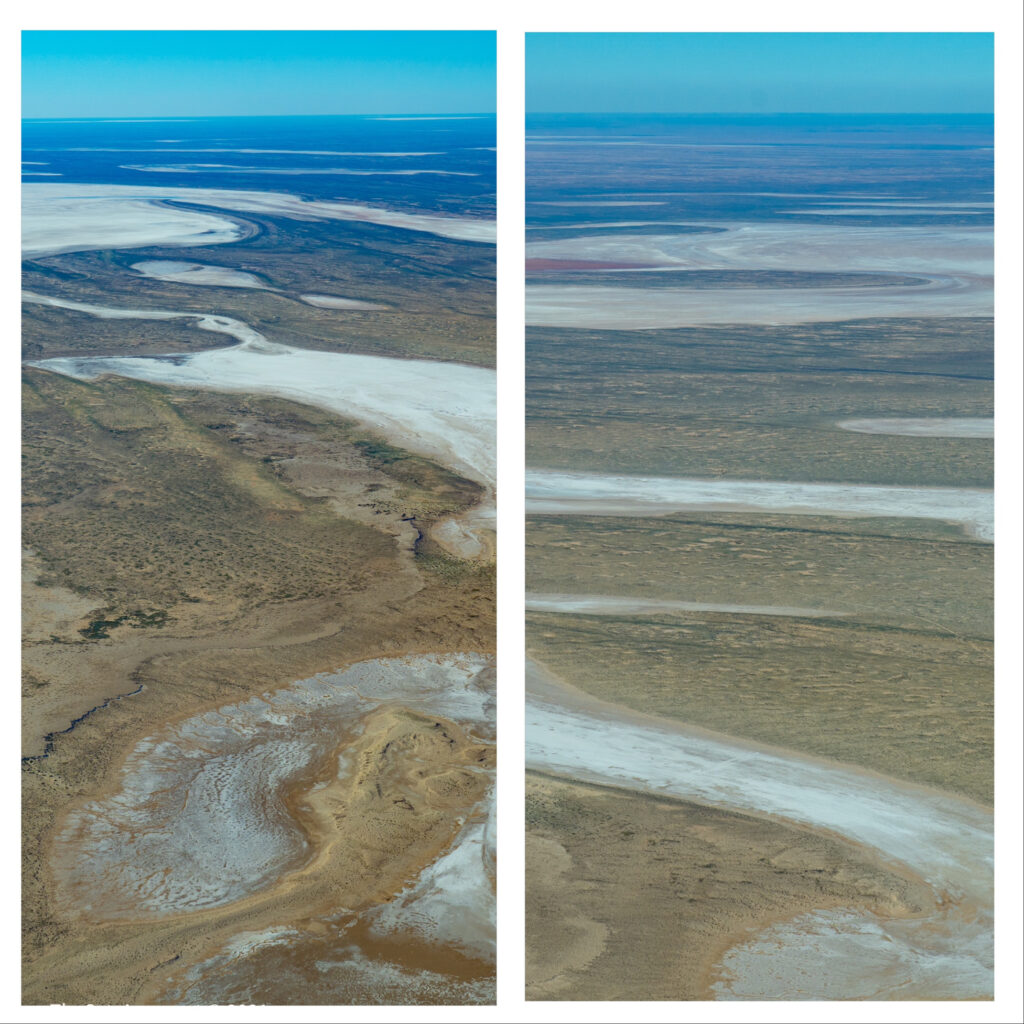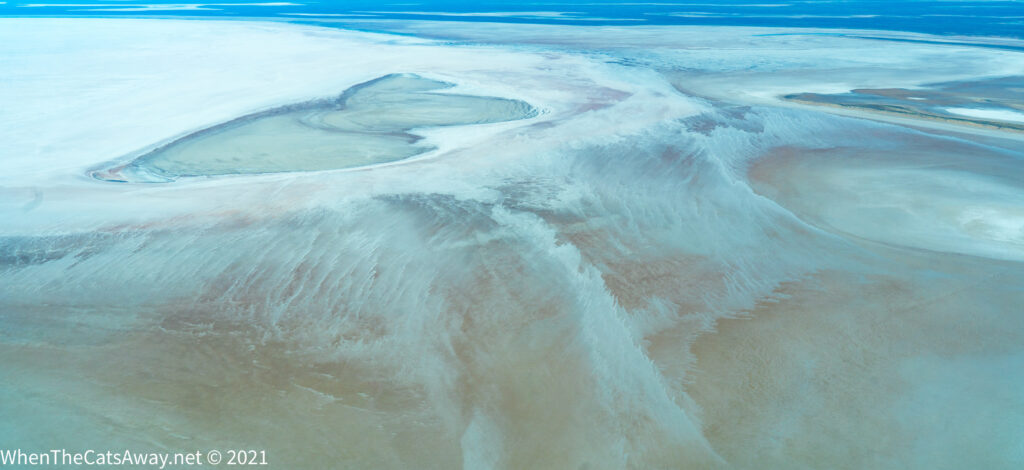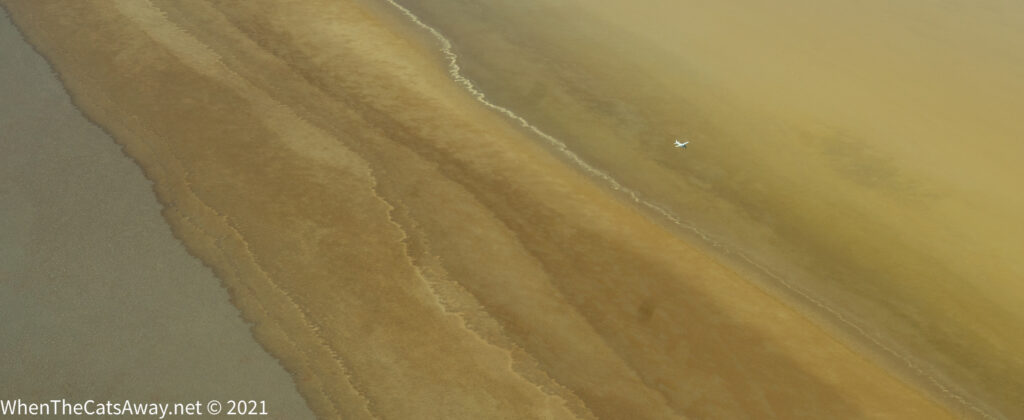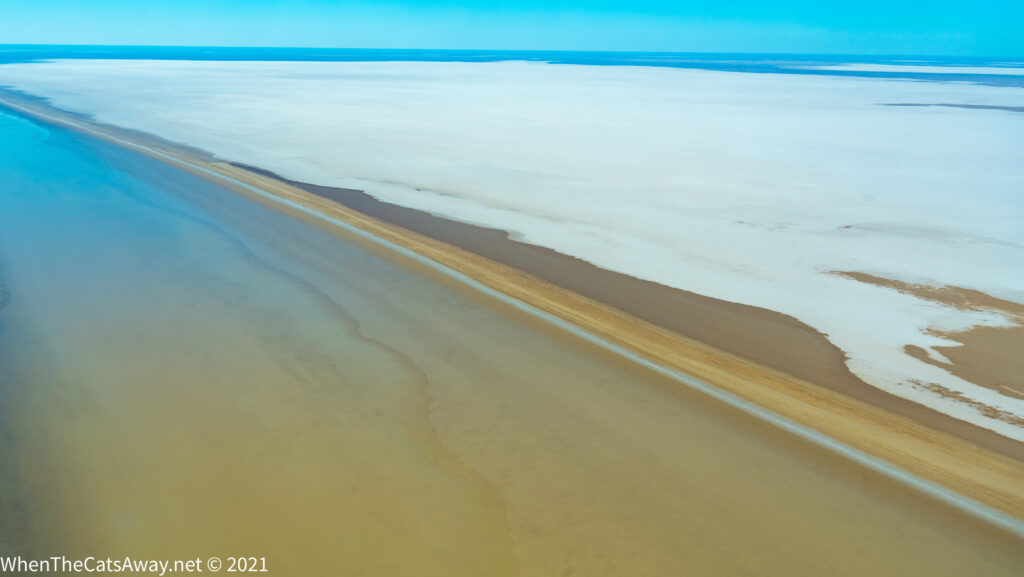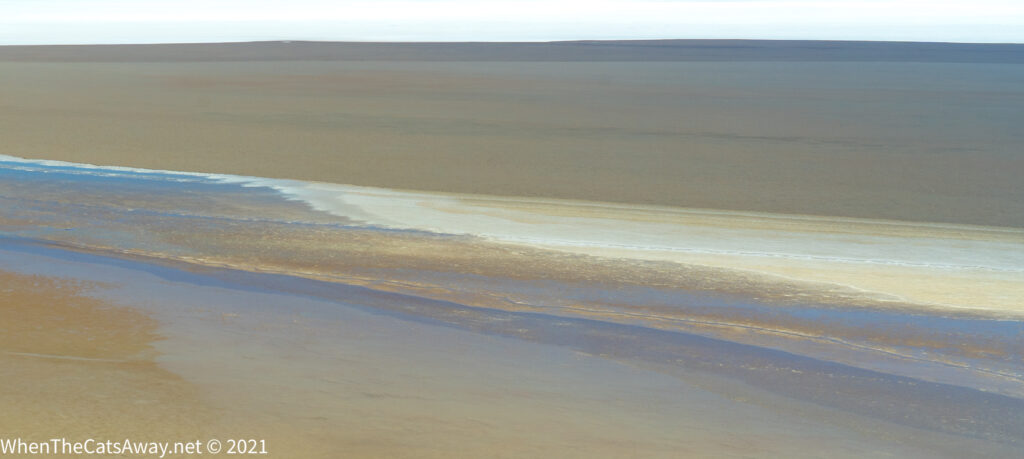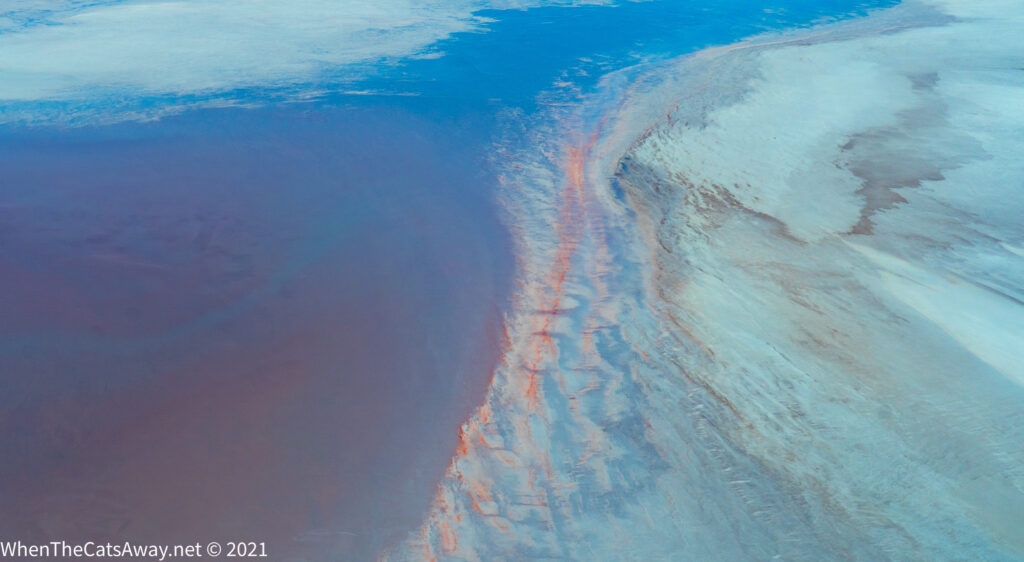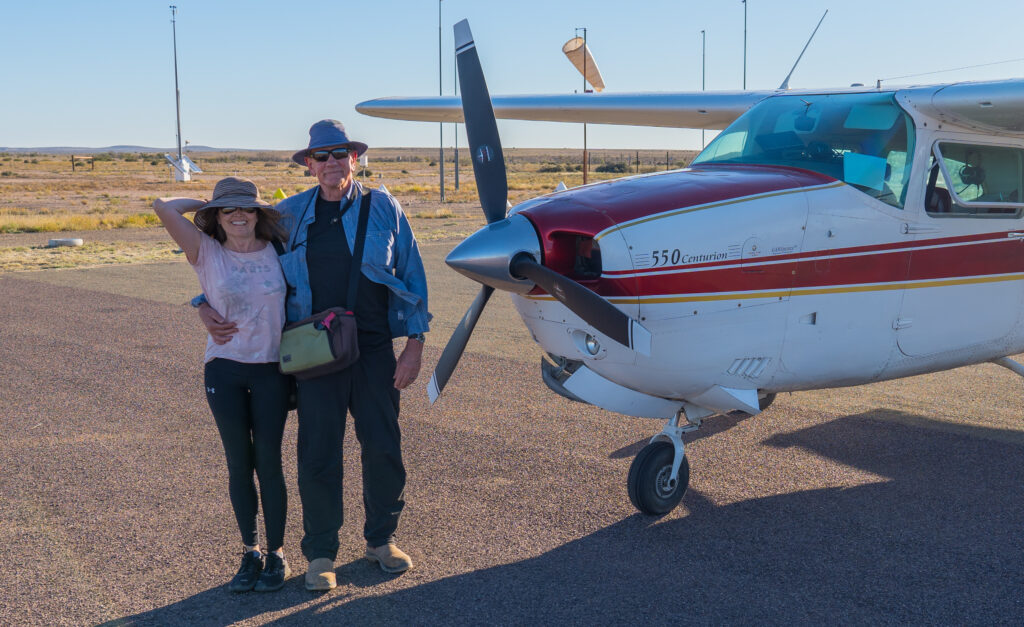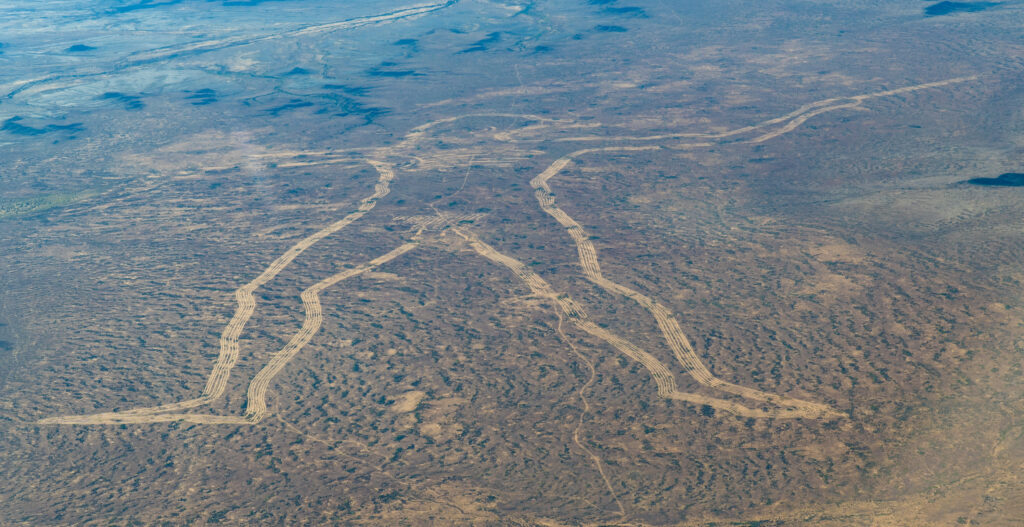Author: Mr A
Location: Mungeranie Hotel, South Australia to Birdsville, Queensland
When we decided we wanted to travel up the Birdsville Track, we never imagined driving several hundred kilometres of it at night! We never drive at night, let alone down a track. But we had no choice. Our caravan was on the back of a truck somewhere behind us, and we had to make Birdsville that night because we had nowhere to sleep otherwise.
The first hundred kilometres from the Murngerranie Hotel was easy going. The late afternoon light bathed the desert in an eerie golden glow.
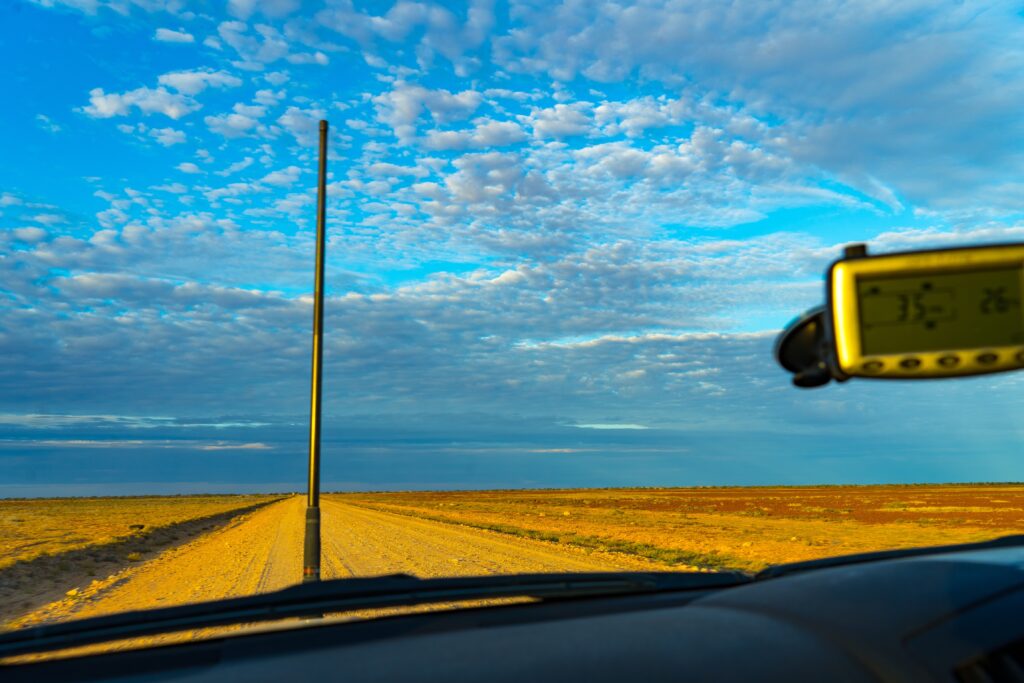
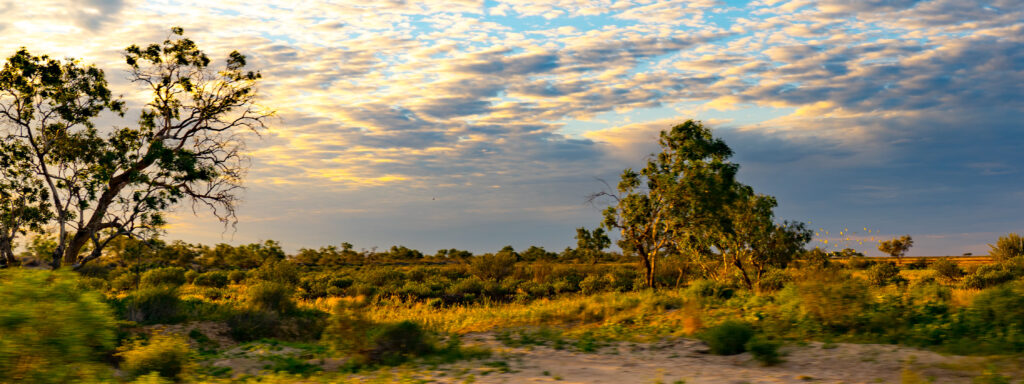
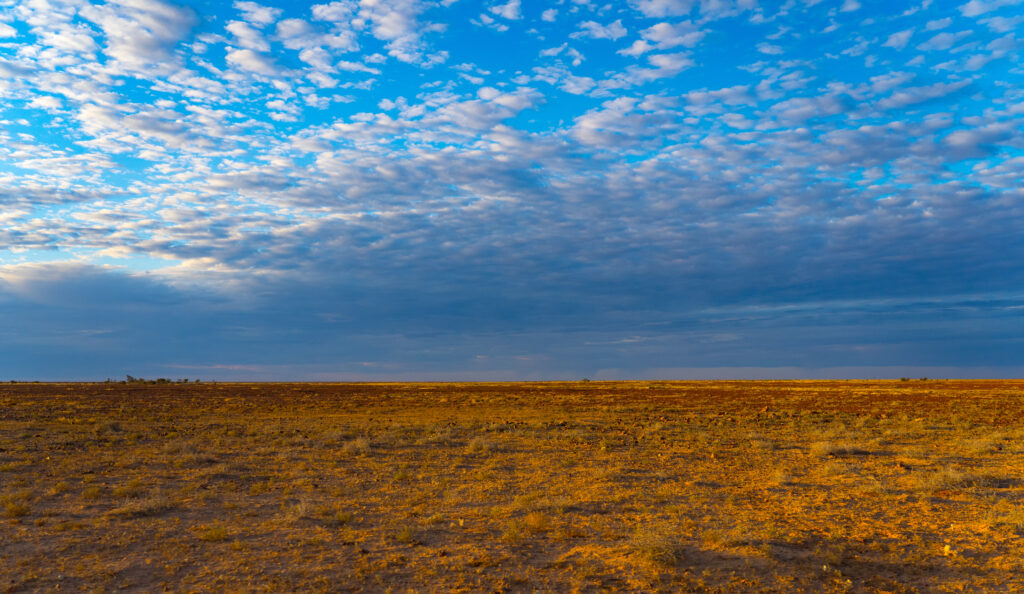
We passed a couple of vehicles coming the other way, then we were on our own. To our west was the huge expanse of the Simpson Desert, all 176,000 square kilometres of it, and that is the size of Cambodia! To our east the, Sturt Stony Desert, then the Strezlecki Desert. Vast, almost completely empty of people, the odd cattle station, that’s it.
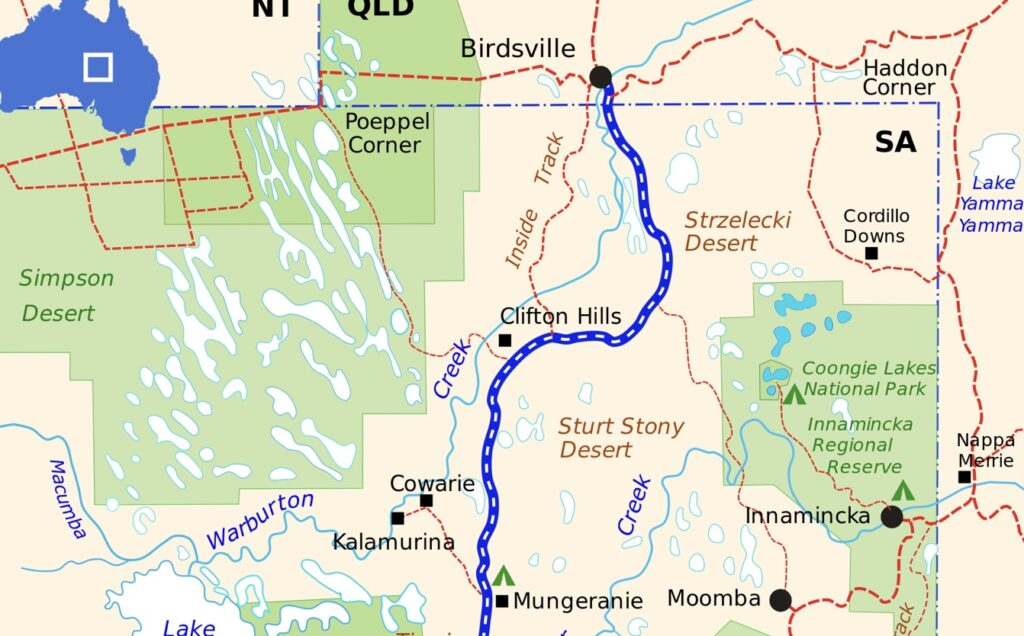
Travelling through country like this we felt exposed without our home being towed behind us. We had nowhere to stop and shelter should we break down. The surface deteriorated, as we had been told it would, and we had to slow right down. The surface here is made up of what is called gibber rocks; what is left after the sheets of sandstone have been broken down over the millennia by erosion, and the sand and dust has blown away. Careful driving is required. But we had to press on as night fell. It really isn’t a smart idea to drive in the bush at night, especially on these unfenced roads, where wandering stock can suddenly appear.
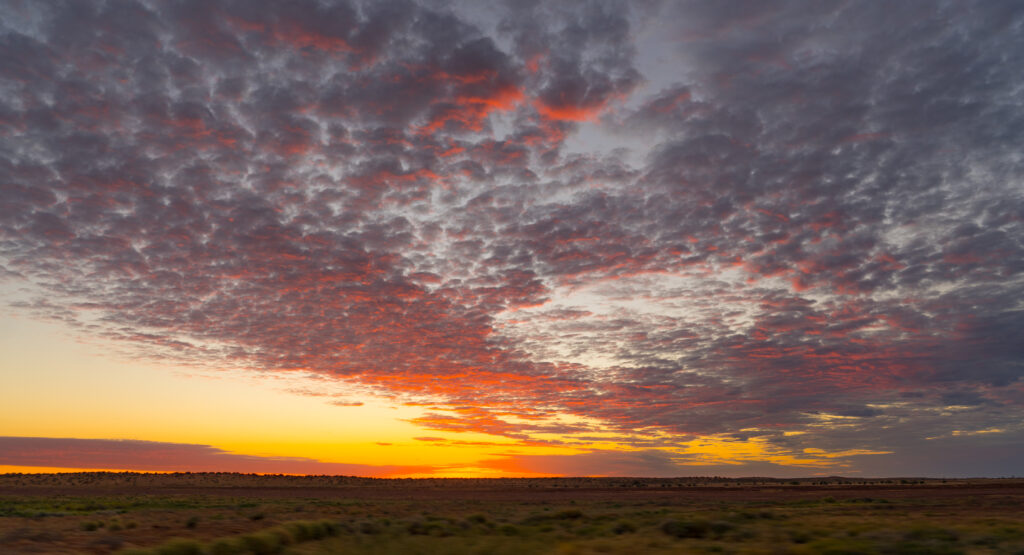
I normally do all the driving, as Catherine is not so comfortable doing it when we are towing, but now she took over the wheel as my glaucoma makes night driving problematic. We were both on high alert, and suddenly there was a cow and her calf charging along beside us. Luckily they didn’t veer in front and we were safely past them, hearts pounding. After what seemed like an age, but actually we made good time, we spotted the sparse lights of Birdsville as we crested a hill.
I had rang from the hotel to get us a motel room, and managed to snag literally the last bed in town. This is peak travelling season as the winter temperatures makes the desert country more accessible. Combine that with the restrictions on Australians leaving the country, and the scarce towns that there are, are heaving.
The no pets policy was kindly waived by the lovely folk who run the Birdsville Caravan Park given our situation. We got in at 7.30pm. Our tow truck driver didn’t get in until 10.30 pm, we found out the next day. These guys work so hard. Anyway we crashed out, our little Tassie super excited to be in a new environment, racing (a relative term in her case nowadays) round the room with big wide eyes. Every so often she’d come up to one of us, stare into our eyes, and tap us with her paw on the shoulder, with a speech bubble only we could see that said “What the hell’s going on? Where have you brought me now?” Heart melting stuff, for us cat dotty folk anyway.
We went over to see our tow truck driver Blake in the morning, he was now wearing his other hat of bush-mechanic-extraordinaire. He warned us that he would “get to the repair when he could”, but had to first go and rescue someone who was stuck in the desert after the storm last night. A bit of rain on that surface and the tracks get pretty crazy. We settled in to Birdsville life, with me quietly expecting we were going to be here for a bit.
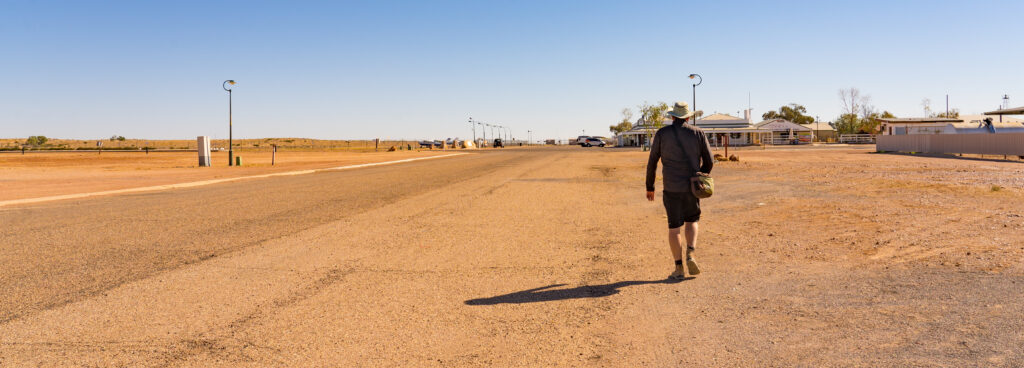
The first visit was to the bakery. After some blood tests in March showed my cholesterol was way too high, I had been off the pies since April 1. And yes I was an April Fool to think it would stay that way forever. The smell of baking was just too much, and the local speciality was a curried camel pie! It was so good I had another…oops.
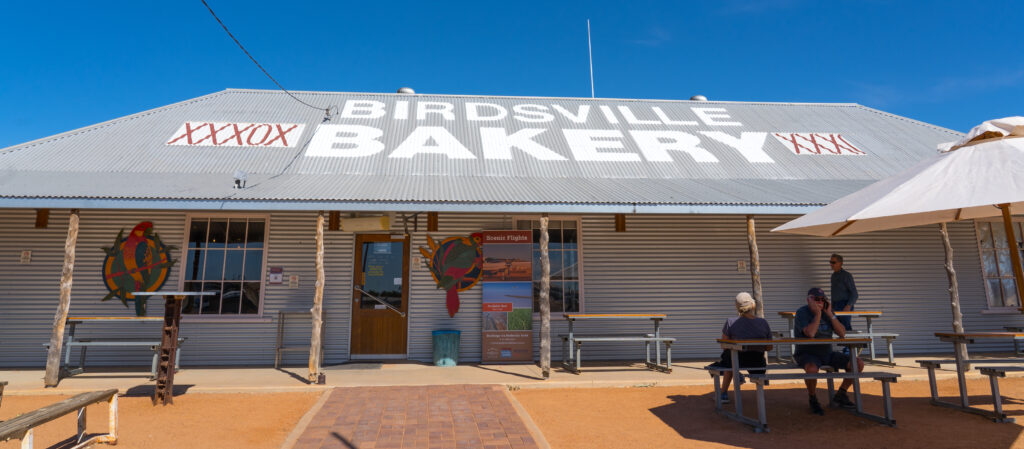
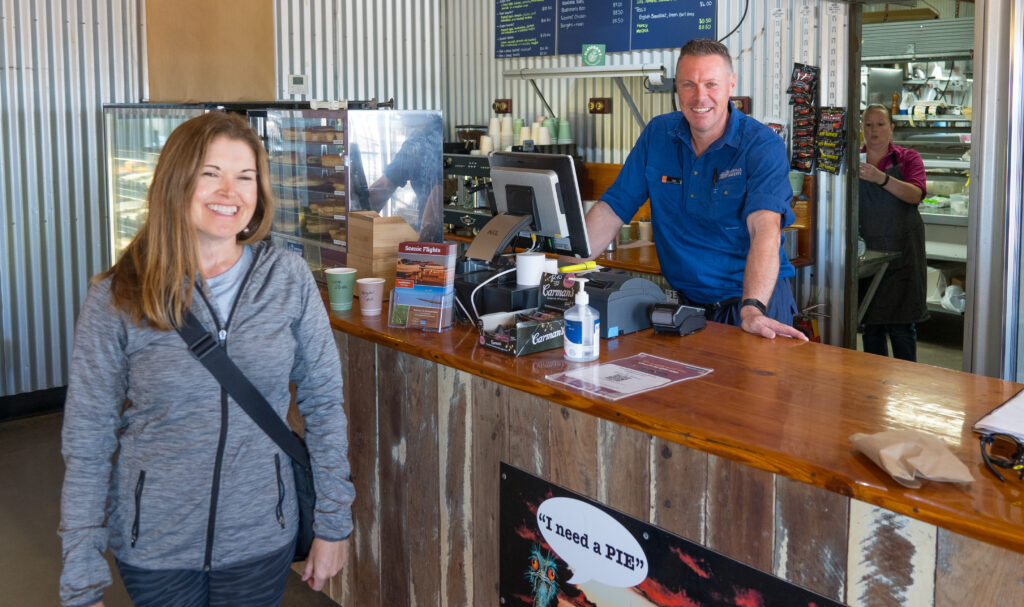
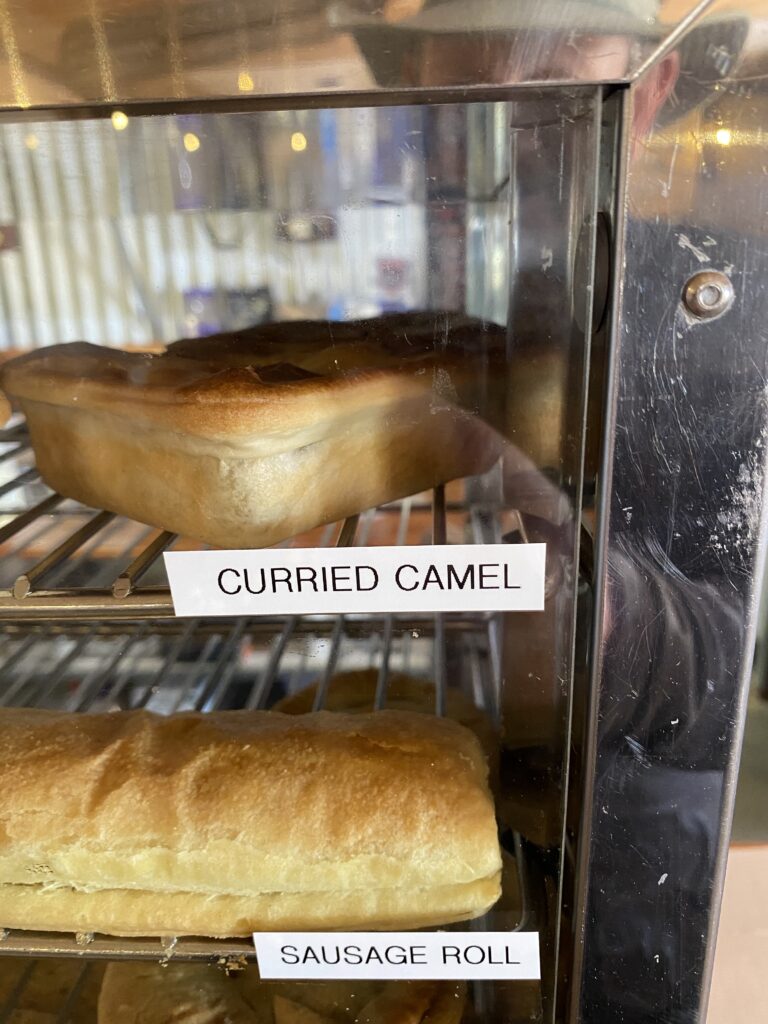
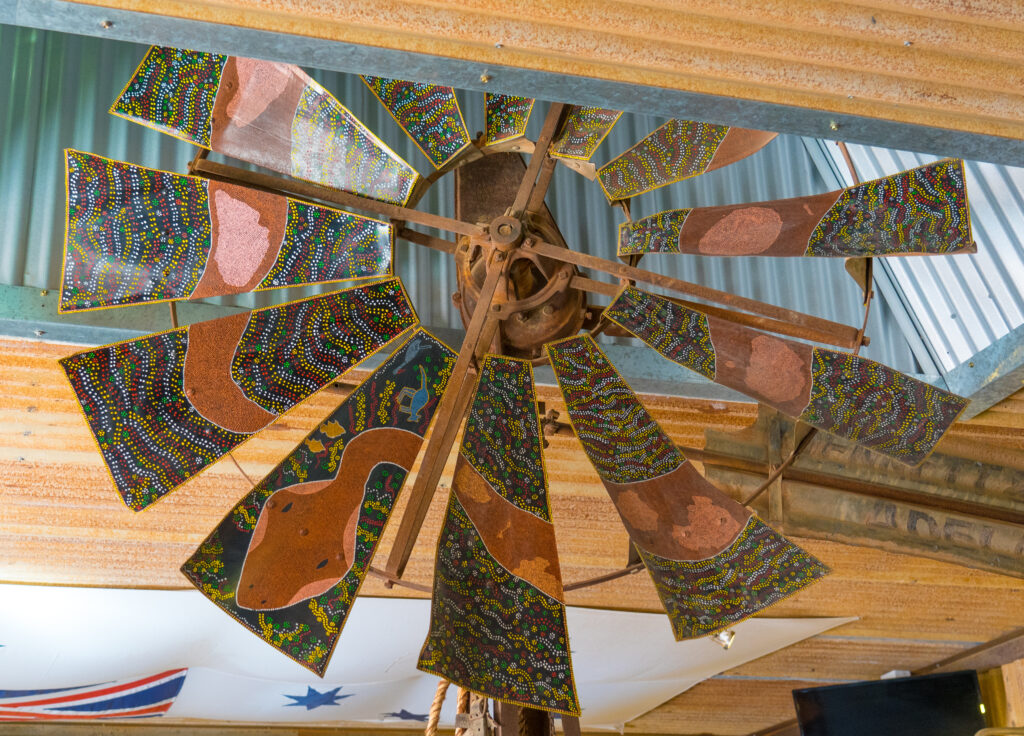
I asked the guy serving (Jim I think) what was his story, as I do, and it would become a familiar one in Birdsville. He and his partner was passing though in their caravan, liked it and stayed. The same for our mechanic Blake and his partner, set out to tour Australia from Brisbane and never got past Birdsville.
’So what was the attraction?’ I asked. From several people, a similar theme of enjoying a strong community (around 120 permanent residents). Interestingly thats around the size that the research tells us humans can just about remember who is who and have the emotional bandwidth to maintain their relationships with. A hundred and fifty people is the upper limit and called “Dumbar’s number” It seems to even hold true for digital relationships. So check your Facebook friends – more than 150 and you really are going to struggle to give them the love and attention a friendship deserves.
Time to book the pub. We got the last two seats for dinner.
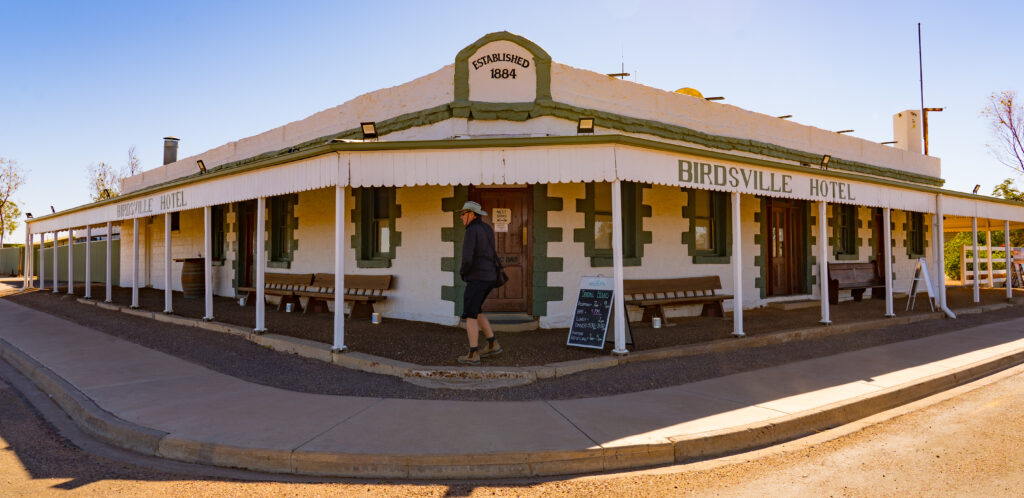
Checking in with our mechanic, I was right and it looked like we were going to be here at least one more night.
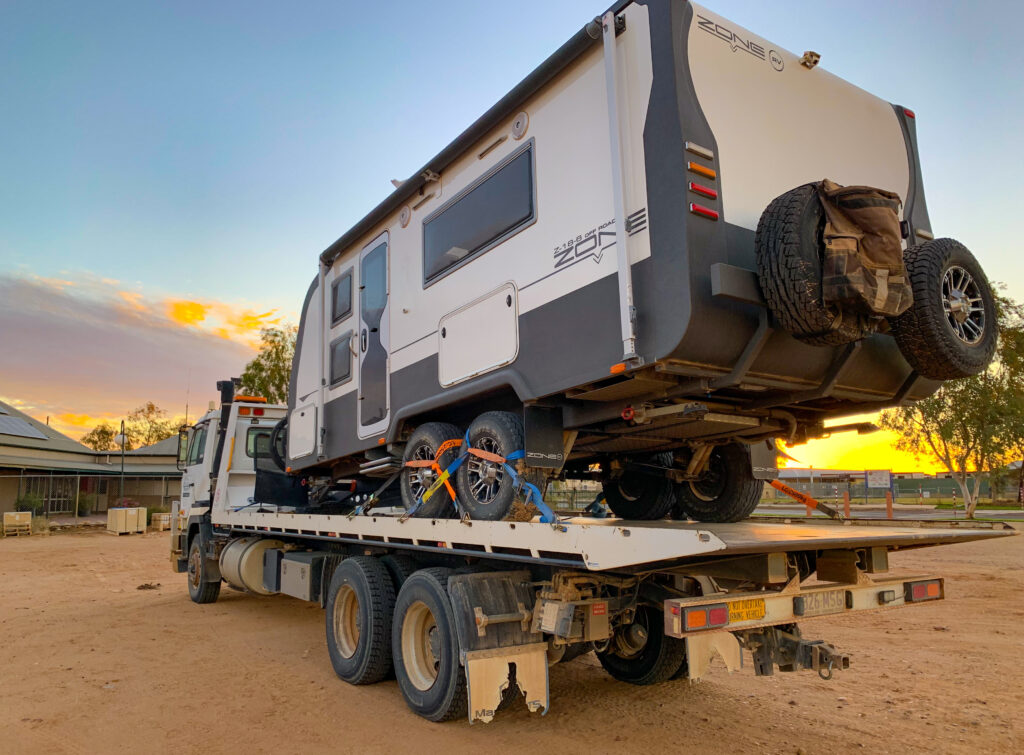
On the way to the pub for our evening meal, we were treated to a great sunset and view of a blood super moon. We liked Birdsville!
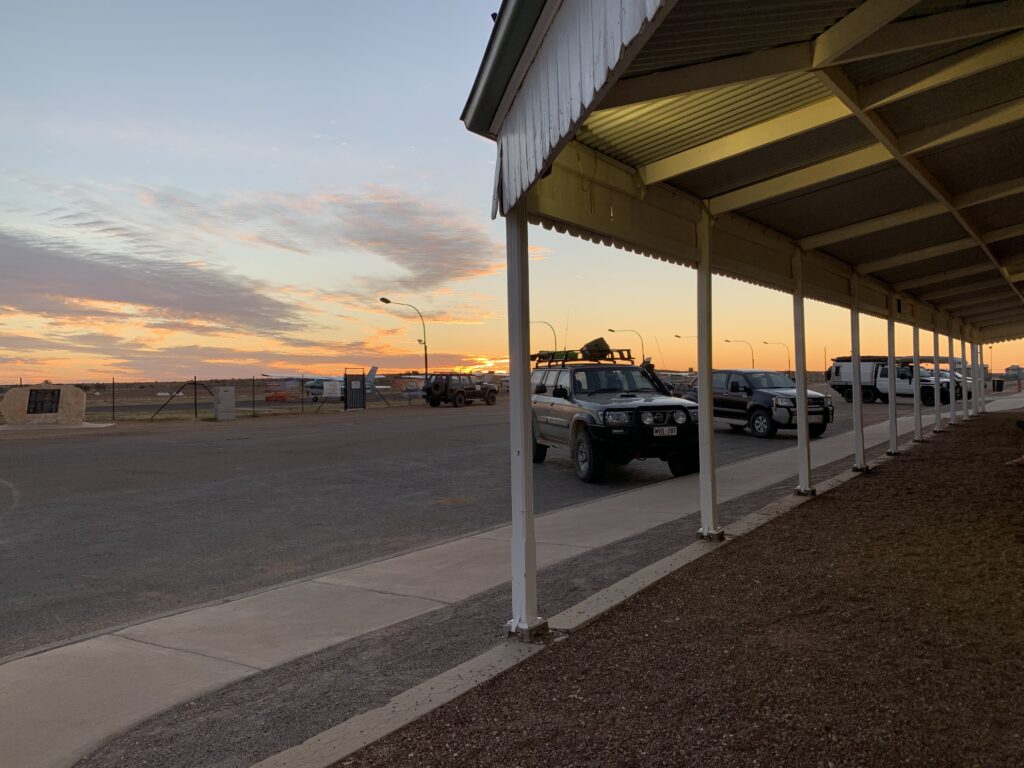
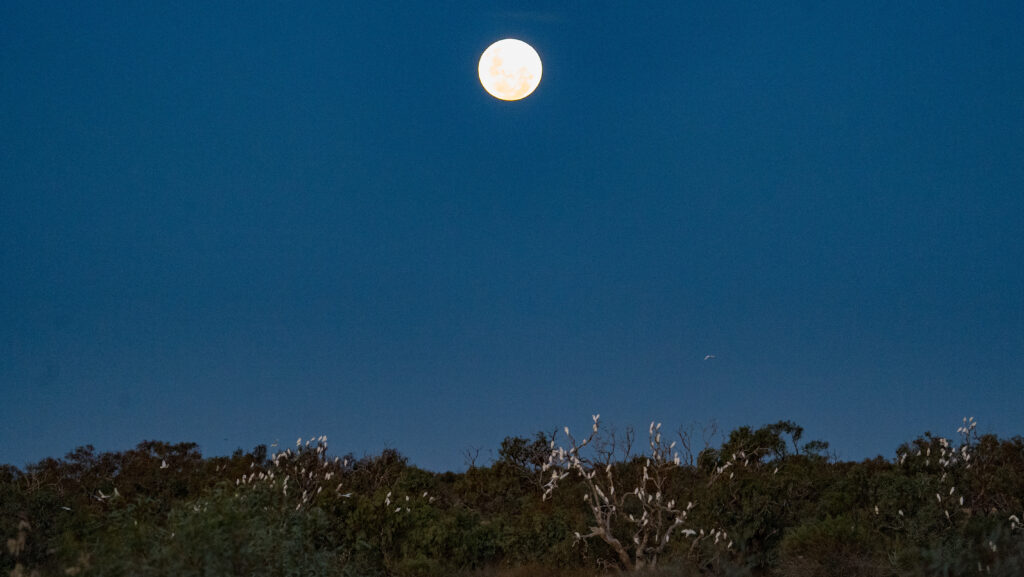
What a wonderful dining experience. Our server Joel was just such a delight, taking time to tell us about what we might be interested to see around the town. A great little wine list, and the food was superb.
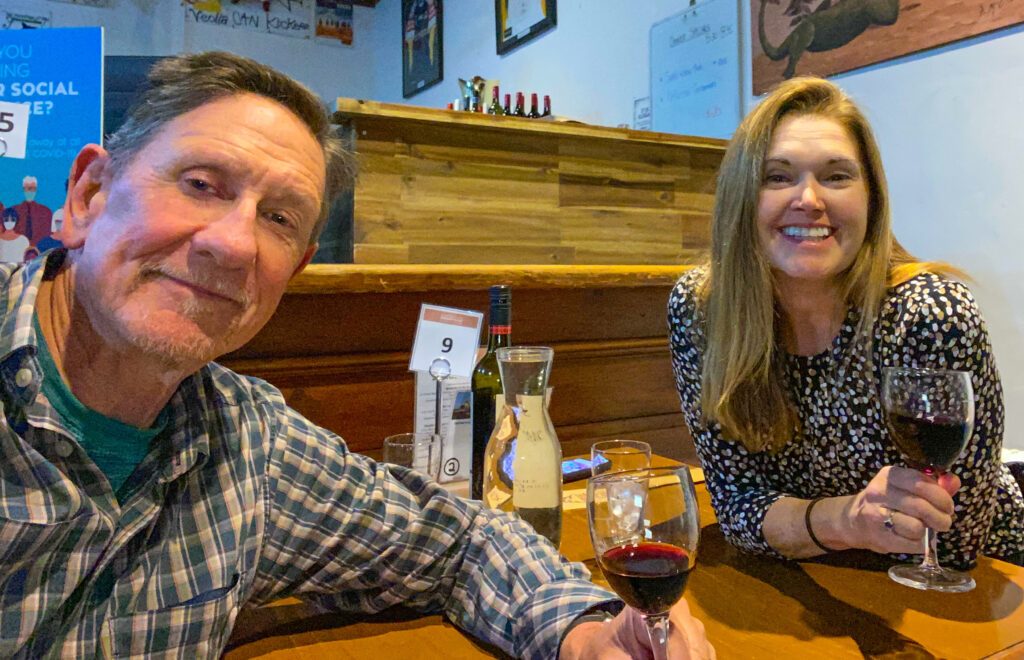
The original pub had burnt down and been rebuilt by its current owner who happened to be a builder. And what a great job they have done. After dinner we moved to the bar and got invited to join a couple of staff from Brown Brothers winery who were there to promote their wines to the pub and its customers. Great fun. then on the way back to our motel room we saw the moon’s eclipse.

The next day it was not a surprise to hear our mechanic say he would once again “get to it when he could”. He’s working on his own at the moment, servicing not just the hundreds of tourists driving in every day with issues, but also the station owners where he gets his year round work from. Last month he has been called out to rescue an 84 year old guy driving his Volvo solo across the Simpson Desert. A bold move indeed.
So we took a drive out into the Simpson a short way from town and wandered along a track we had been recommend for a spot of birding.
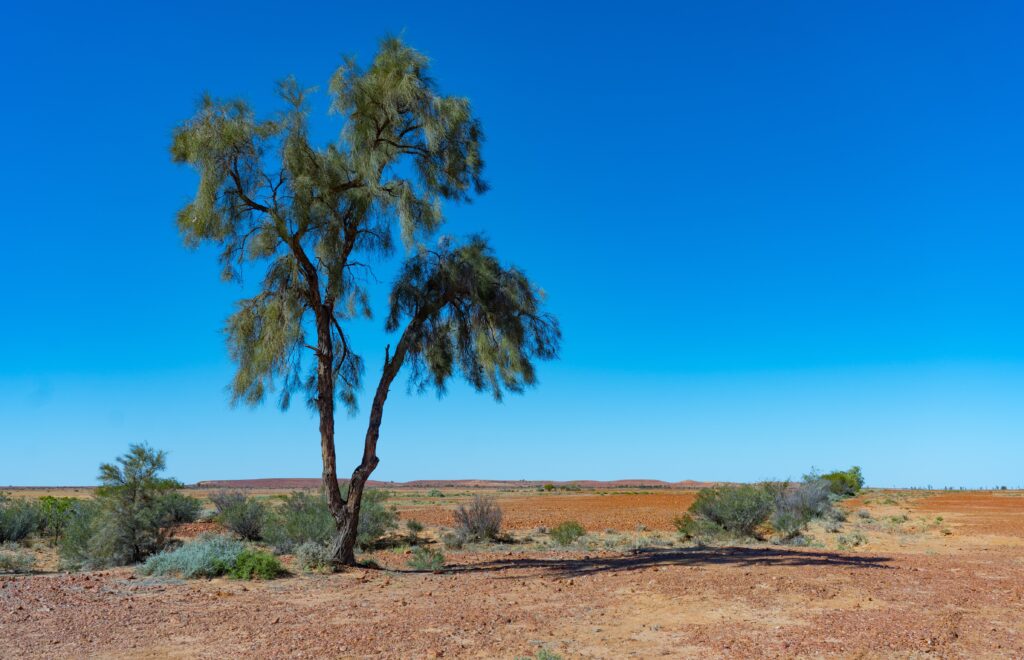
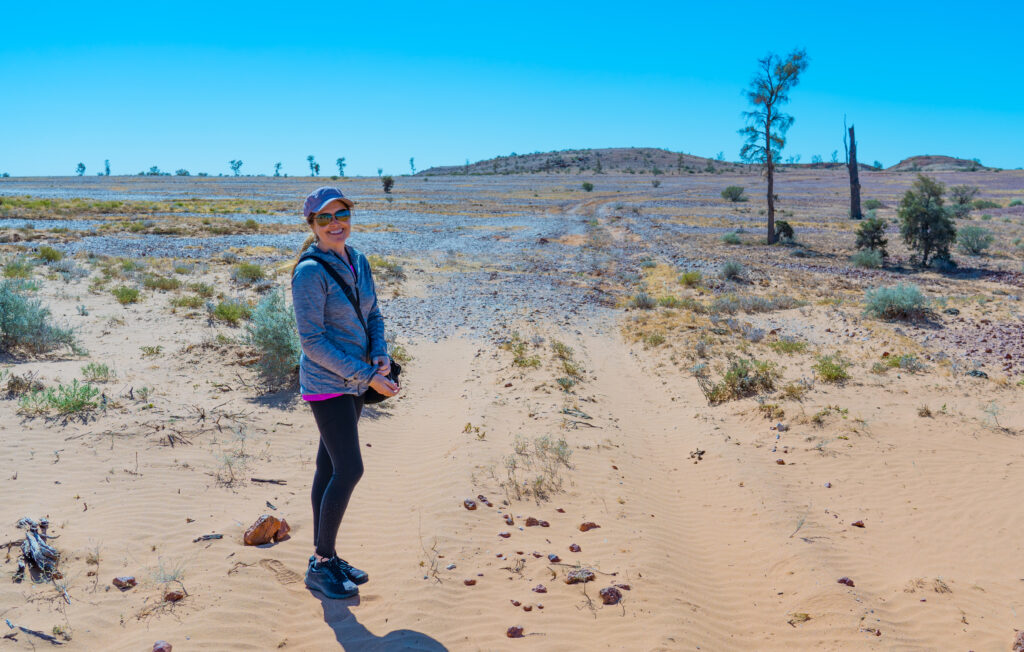
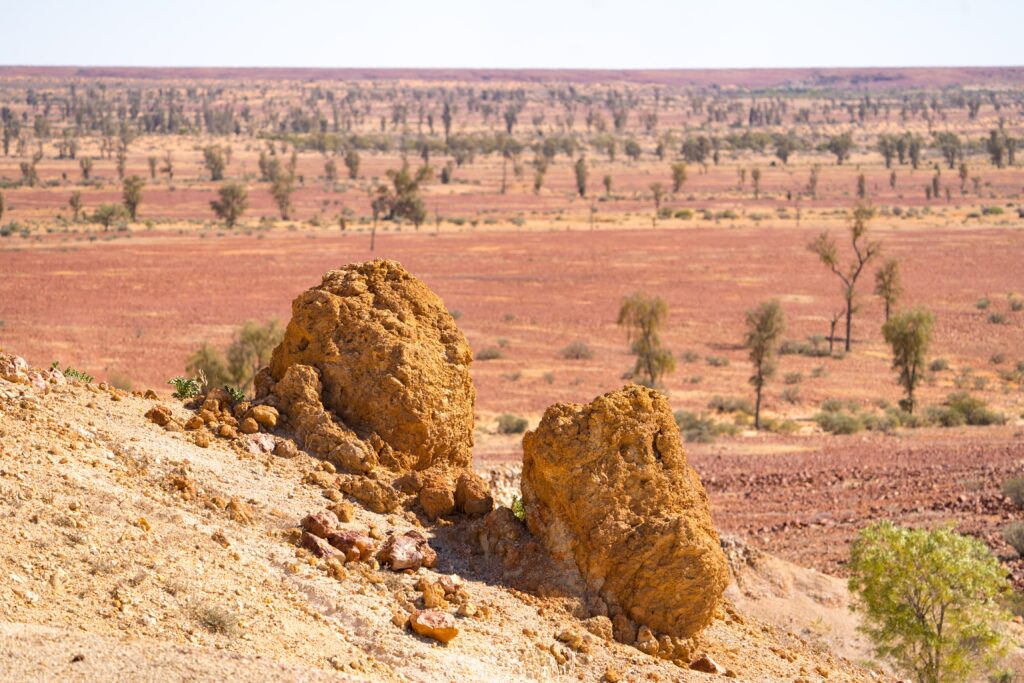
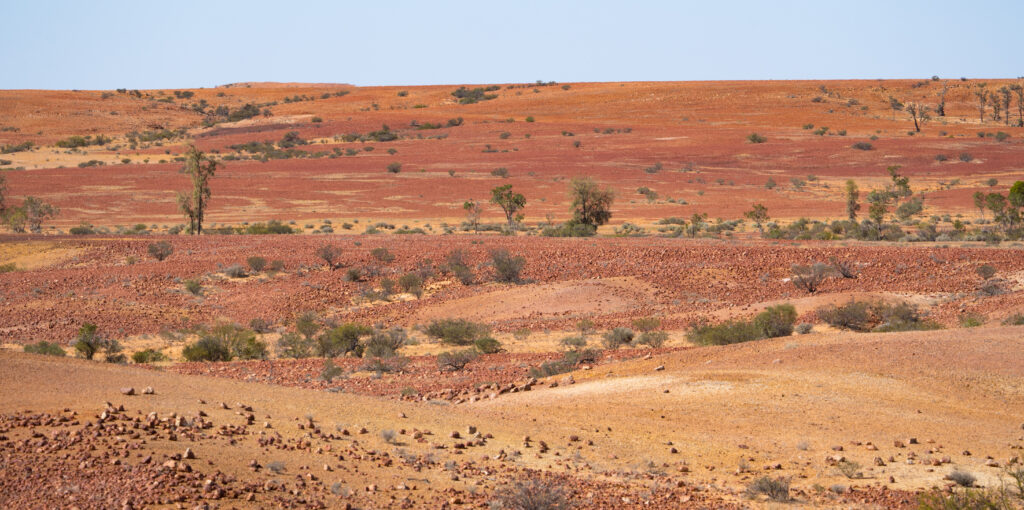
We were rewarded with a Black Kite circling round and eyeing us up. As always I get this super strong connection open up to memories of my father. If you have never listened to Spirit Bird by Xavier Rudd, then give yourself a musical treat. He tells his story of a similar experience he had, connecting with his First Nation ancestors when they visited him through a bird. Its also the same species as the one I had interacted with for my 60th birthday present. Beautiful creatures.

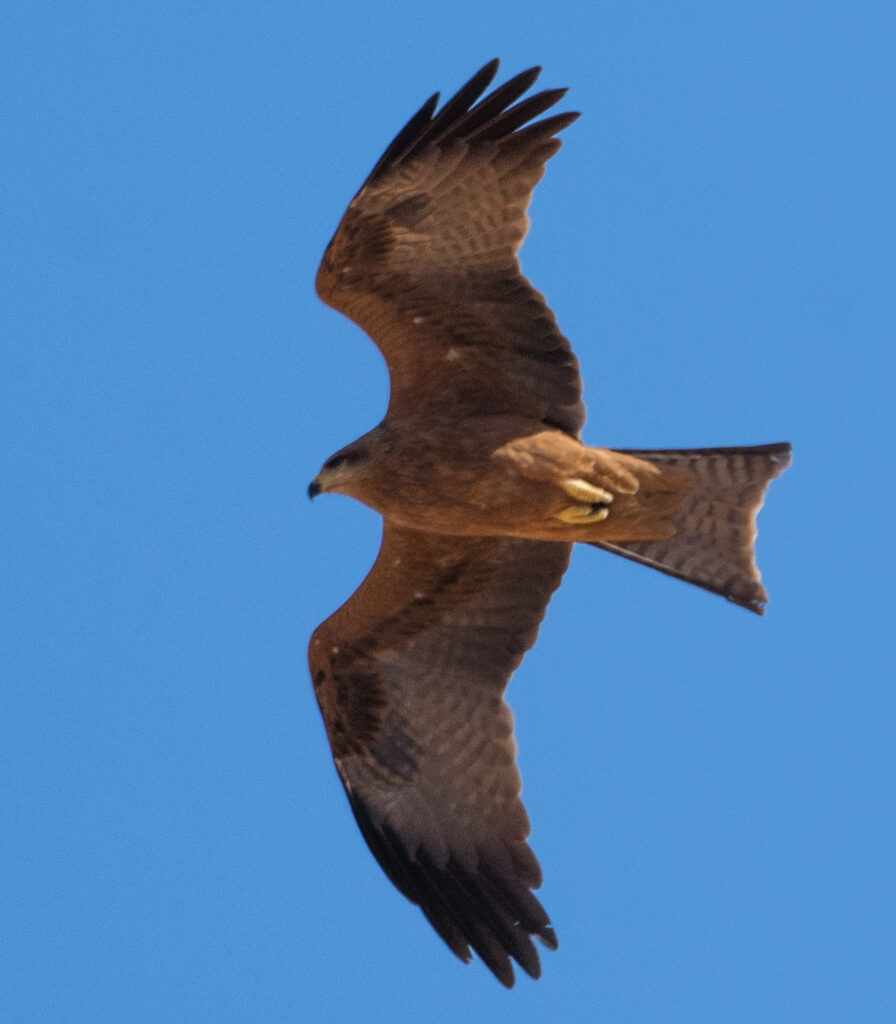
When we headed back into town and checked on our van, there were tools underneath, progress had been made. Blake had sourced some metal rails to replace our broken ones and had started fitting them, then got called away on another emergency. He was finally able to finish the job at at 8.30pm that night, and he still had another one to do after us!
This for us will be the lasting memory of Birdsville. The kindness of its people. They are isolated in a pretty inhospitable place. They look after each other. A great little community we’ve had the pleasure to briefly be part of. It’s time though now to leave and resume our travels.

